Cross-platform apps are an ideal choice for app developers looking to develop an app for both iOS & Android platforms. However, software developers often face a dilemma: which is better – cross-platform or native applications?
With cross-platform applications, developers can reach a broader audience (both Android and iOS) with their products. On the other hand, native applications provide better performance and fewer crashes.
Luckily, Swing2App no-code app builder has both areas covered as our way of cross-platform app building is to create native-like apps for both: Android and iOS!
Swing2App no-code app builder users just have to build a single no-code app and then later choose on which platform they want to publish their app. This approach gives our users a relaxing app-building experience, where they don’t have to worry about the platform, as they can decide later if they want to publish on Android, iOS, or both platforms. Many businesses and app creators now understand the value of being present on both the App Store and Play Store simultaneously, all while managing costs efficiently.
Creating an app that works on multiple platforms online not only reaches a broader audience but also provides simplicity and cost-efficiency. Hence, opting for cross-platform mobile development is a smart choice.
Let’s understand everything about cross-platform apps.
WHAT ARE CROSS-PLATFORM APPS?
As mobile apps increasingly become vital for businesses, it’s crucial to grasp the complexities of app development. Cross-platform mobile development involves creating software apps compatible with multiple mobile operating systems.
In the context of cross-platform apps, developers have the option to share a portion or even the entirety of the source code. This allows developers to build and launch mobile resources that function on both Android and iOS without creating separate versions for each platform.
Why is cross-platform app development important in 2023?
Cross-platform mobile app development enables developers to create apps using a single codebase, thereby lowering development expenses. Additionally, it extends the reach of your app to a wider audience. This approach ensures a uniform user experience across various platforms, simplifying the process of maintenance and updates.
The mobile app industry offers over 4.4 million apps on Appstore and Google Play, installed on 6 billion smartphones worldwide, as of 2023. If you plan to develop an application, then cross-platform apps can give you access to both the Android & iOS app marketplaces.
THE DIFFERENCE BETWEEN NATIVE AND CROSS-PLATFORM APP DEVELOPMENT
The debate between Native and Cross-platform app development has been ongoing within the tech community for years. Some experts prefer native apps, while companies like Uber are venturing into cross-platform app development with their framework, Ribs, to revamp their driver app.
Both native and cross-platform development technologies continuously evolve. This dynamic nature suggests the need to revisit these topics periodically to assess which options currently excel. Native app development prioritizes creating a well-tailored design closely aligned with the target platform (such as Android or iOS), simplifying the process and avoiding the complexity of spanning multiple platform app development.
On the other hand, cross-platform frameworks aim to create apps that cater to a wide range of devices, reaching a broad audience during the programming and development phase.
| Parameter | Cross Platform Apps | Native Apps |
| Cost | Relatively low cost of development | High cost of development |
| Code Usability | Single code can be utilized for multiple platforms for easy portability | Works for only a single platform |
| Device Access | No assured access to all device APIs | SDK provides access to the device’s API without any issues |
| UI Consistency | Limited consistency | Consistent with the UI components of the device |
| Performance | High on performance but may lag and hardware compatibility issues may occur. | Seamless performance |
CHALLENGES IN THE CROSS-PLATFORM APP DEVELOPMENT PROCESS
A few years ago, cross-platform app development was primarily focused on creating simple mobile apps and games. However, as time has progressed, emerging technologies have made cross-platform development more adaptable, robust, and versatile.
1. Compatibility issues with different devices and platforms (iOS &Android)
When it comes to cross-platform mobile app development, compatibility can present challenges. Problems may arise when apps are not designed to run smoothly on certain devices, leading to performance issues.
2. Limited access to device hardware features
Cross-platform frameworks operate differently on multiple devices, making it challenging to utilize the unique features of each device. This limitation stems from the tools not having direct access to the hardware of these devices.
3. App Performance issues as compared to native apps
Performance issues can occur due to inconsistent communication between native and non-native components of devices, potentially affecting the user experience.
4. Challenge in keeping up with updates to different operating systems and devices
Cross-platform app developers often struggle to ensure that their apps remain compatible with evolving devices and operating systems.
Some other challenges faced by the cross-platform apps may include:
- Maintaining consistency across various devices and operating systems.
- Addressing performance-related issues to enhance the user experience.
- Security concerns, especially for business apps handling sensitive user data.
Despite these challenges, the advantages of cross-platform app development often outweigh the drawbacks, making it a valuable approach for many projects.
BENEFITS OF CROSS-PLATFORM MOBILE DEVELOPMENT
Cross-platform applications possess code that is shareable and can be employed across various platforms. This single codebase expedites the development process and results in cost savings, particularly when it comes to repetitive tasks like handling data serialization and making API calls. Quicker development generally leads to a more rapid time to market.
Embracing the cross-platform approach allows project managers to utilize their development resources more efficiently since there’s no need to allocate separate resources for creating apps for different platforms.
Additionally, a reduced volume of code reduces the likelihood of encountering bugs and security issues, thereby lessening the time and effort required for code testing and upkeep.
Another advantage is that, in many instances, developers only need proficiency in standard programming languages. Development tools and frameworks are readily available to handle the majority of the complex tasks.
Furthermore, cross-platform apps provide a broader reach as they can cater to the needs of diverse audiences using various operating systems and devices.
DRAWBACKS OF CROSS-PLATFORM MOBILE DEVELOPMENT
Performance problems represent the most prevalent concern encountered in cross-platform applications. A significant number of these applications offer restricted functionality due to their inability to accommodate numerous functions exclusive to native mobile devices, such as advanced graphics. The subpar design also contributes to this issue, leading to an unsatisfactory user experience.
Nevertheless, advancements in development technologies and frameworks are actively addressing these challenges, giving rise to cross-platform apps characterized by the following attributes:
- Flexible.
- Adaptable.
- Stable.
- exceptional performance
- Extensive functionality
- Capability to deliver a positive user experience (UX).
CROSS-PLATFORM APPS: A COST-EFFECTIVE SOLUTION FOR BUILDING MOBILE APPS MULTIPLE APP STORES
The mobile app landscape is primarily dominated by two major players: the Google Play Store and the Apple App Store. Companies cannot afford to overlook their presence on either of these platforms. However, developing code-based apps for each of them can be a costly endeavor.
Cross-platform apps offer a solution to this challenge. These apps follow the principle of “Write once, run everywhere,” allowing one app concept to function across different platforms. Their popularity has surged in recent years due to their user-friendliness, time-saving capabilities, and cost-effectiveness. Currently, approximately 33% of mobile developers utilize cross-platform technologies or frameworks, a number expected to continue its upward trajectory in the coming years.
In 2020, Android and iOS app revenue collectively reached a staggering $111 billion, nearly doubling the revenue from 2017. These impressive figures, among other factors, have spurred the creation of a total of 5.7 million apps available on the App Store and Play Store combined.
As these numbers continue to climb, developers seek swift and cost-effective methods for app development. Cross-platform development tools not only facilitate rapid app creation for multiple platforms but also offer a budget-friendly approach to the process.
NOTABLE CROSS-PLATFORM APPS
There are numerous instances of apps constructed utilizing cross-platform development tools. Currently, one-third of all developers opt for cross-platform solutions when building apps, and these figures are expected to increase as more companies prefer these apps over native alternatives. Here are a few noteworthy examples of cross-platform apps:
Gyroscope
This health and productivity company leveraged React Native, a JavaScript framework capable of constructing apps for both iOS and Android, to create their app. Utilizing React’s capabilities, they presented data in two visually appealing and well-designed formats.
Xianyu by Alibaba
Xianyu, a platform for second-hand goods under the Alibaba Group’s e-commerce umbrella, required a robust system for implementation and scalability. Therefore, they opted for Flutter, a framework developed by Google that enables the creation of applications for mobile, web, and desktop using a single codebase.
However, they have built these apps with the help of a highly skilled IT team that used the coding languages mentioned above. With Swing2App no-code app builder you don’t need to worry about coding at all, you can build cross-platform apps for Android, iOS, and web apps without any coding at all!
HOW TO BUILD A CROSS-PLATFORM APP WITH SWING2APP
Swing2App no-code app builder provides a speedy and budget-friendly answer to creating cross-platform applications. Instead of laboriously coding hundreds of lines for each platform, you can create a single app and deploy it across multiple platforms. What’s more, this can all be achieved effortlessly using the drag-and-drop functionality. In essence, developers can now construct apps without the need for manual coding. To create your own cross-platform app, whether it’s a Flutter app, an Android tablet app, or any other variety, simply follow these steps with Swing2App:
Signup Swing2App to create mobile apps
Swing2App no-code app builder offers a free sign-up option, allowing you to build your apps without any initial cost. You only pay when you’re ready to publish your app.
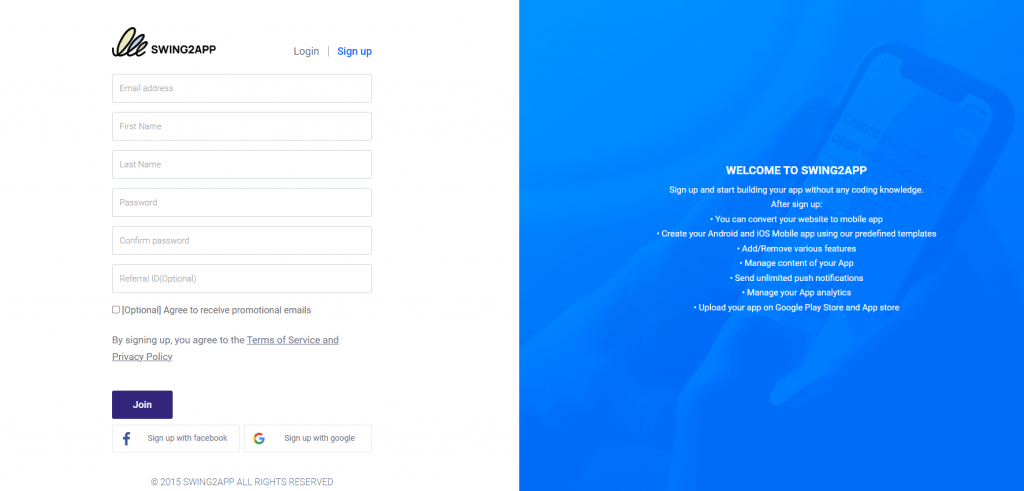
Click here to register for Swing2App no-code app builder.
Additionally, Swing2App no-code builder provides affordable subscription plans, ensuring that you can create and launch your apps within your budget.
Once you log in, you will be directed to the Maker V3 page of the Swing2App no-code builder.
Here click on the “+” icon in the top left of the bar to create a new app, here you will get a pop-up screen where you can choose which type of app you want to create. Here, we will go with the “fast app creation”.
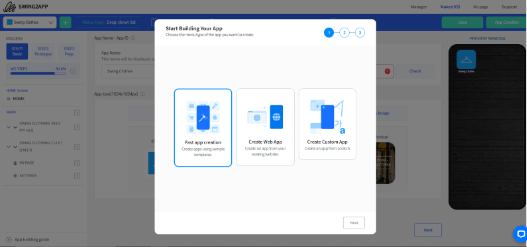
Fill out the basic details of your app.
This is the first step where you have to update your “App Basics” like your app name, app icon, and splash screen, and create a unique alphanumeric app ID. With this, your first step is completed.

Choose a template in the “prototype” section
Once you’re in your project, you’ll receive a guided tour of the Swing2App no-code builder, which you can choose to watch or skip. You can customize various features and styles, adding a personal touch by adjusting fonts and colors.
Next comes step 2 “Prototype”: you have to choose your app UI (prototype), Swing2App no-code app builder offers 5 variations as below:

Read more about the 5 Types of UI In Swing2app to Create a No-Code App
The Swing2App no-code app builder provides a variety of templates designed to simplify and expedite the app-building process. Select a template that suits your requirements and begin editing. Alternatively, you can initiate a new project from scratch by selecting the “Create Custom app” option in the beginning.

Upload content
Step 3 is “Page”, where you can customize your home page, add or delete menu options, add features and functionalities, and other advanced menu settings (like hiding a menu from a certain audience, etc.). To these menu options, if you have content such as images or audio files, you can easily upload them to the app using the Swing2App no-code builder. You’ll find user-friendly options and Swing2App Analytics support for creating engaging apps.
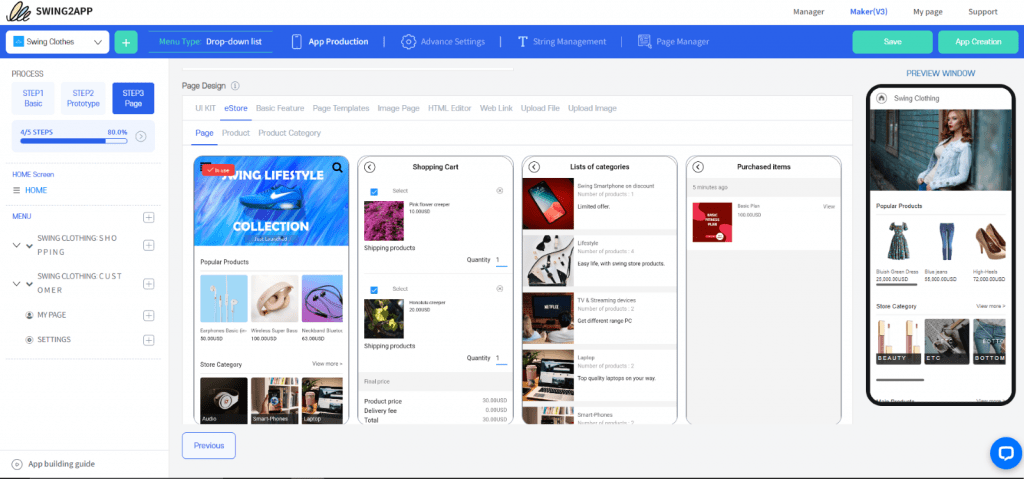
Monetize
Swing2App no-code builder also allows you to monetize your app by setting up Banner Ads, Interstitial Ads, and Native Ads, turning your app into a potential revenue stream. Moreover, Swing2App doesn’t charge any commission on ads , the entire ad revenue is 100% yours!
Also read: How to Make Money from Swing2App AdMob App Integration?
Upload to App Store
This single app can be submitted to both the App Store and Play Store Market, simplifying the distribution process across multiple app stores.

Additionally, Android users can download the app and test it on their device which helps you to determine if your app is user-friendly by yourself, but Apple users can’t. However, Apple users can get the app preview on Swing2App no-code app builder itself where they can even choose the device model which they want the check their app. You can preview your app by clicking on the “Preview window” on the top of the visual editor.

BENEFITS OF SWING2APP CROSS-PLATFORM BUILDER
Most multi-platform app builders still require some degree of coding skills. But Swing2App’s platform allows building cross-platform apps with no coding skills at all. Here are a few benefits of using Swing2App no-code builder:
Reach out to all mobile audience
Restricting your app to just one app store is no longer sufficient. By developing apps for major platforms like the Play Store and App Store, you can tap into a much larger target audience. With Swing2App no-code builder, you can effortlessly create iOS and Android apps, maximizing your exposure to a diverse audience.
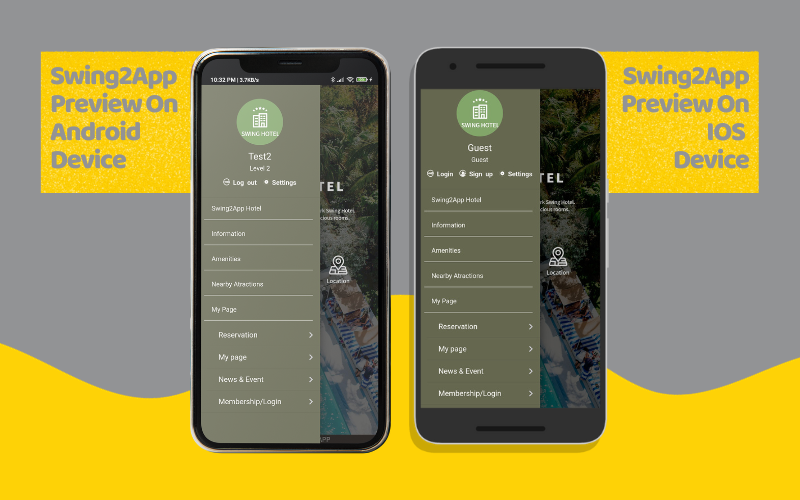
Easy to use
Which option sounds more appealing: writing hundreds of lines of code for each app from scratch, or utilizing a no-code builder to create a single app with no code that functions on multiple platforms? If the latter option sounds preferable, Swing2App no-code builder is the ideal solution!

Easy to maintain
Managing a single app for all platforms is straightforward and allows for easy modifications. Moreover, updates can be swiftly synchronized across all platforms—a benefit that would be impractical with native apps.
Save money, Make Money
The concept of “Write once, run everywhere” has inspired multi-platform app creators. By eliminating the need to hire expert developers for each platform, companies can save a substantial amount of money. These cost savings can be channeled into investing in tools to facilitate business growth.
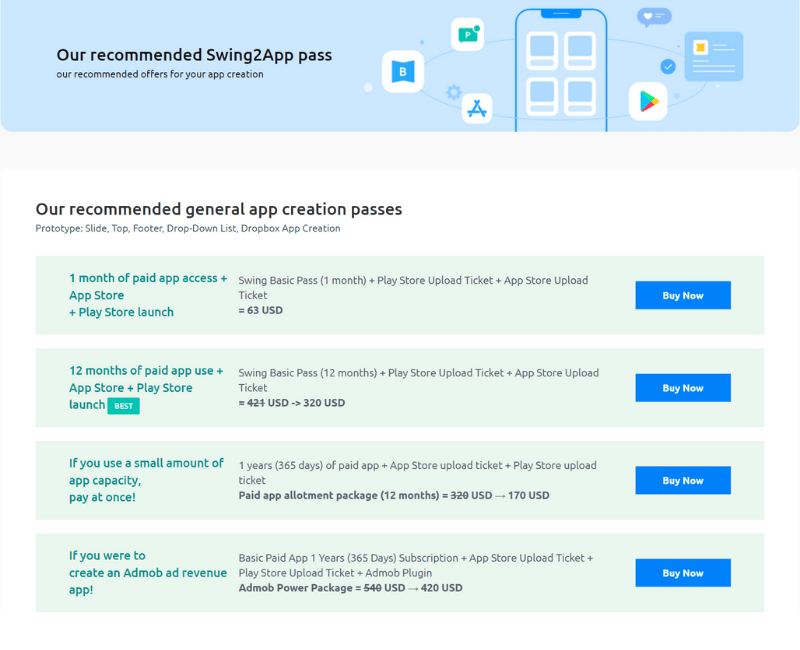
CREATE A CROSS-PLATFORM APP WITH SWING2APP!
With Swing2App no-code builder, developers can swiftly produce cross-platform apps in a matter of minutes. These apps are compatible with various platforms, resulting in cost savings compared to native apps. The remarkable part is that you can achieve all of this without the need for coding!
Furthermore, developers have the flexibility to incorporate various features such as Weblinks and Photo Galleries to enhance the interactivity of their apps. Additionally, advanced monetization techniques offer the potential for generating passive income.
Give Swing2App no-code builder a try and make cross-platform apps today!
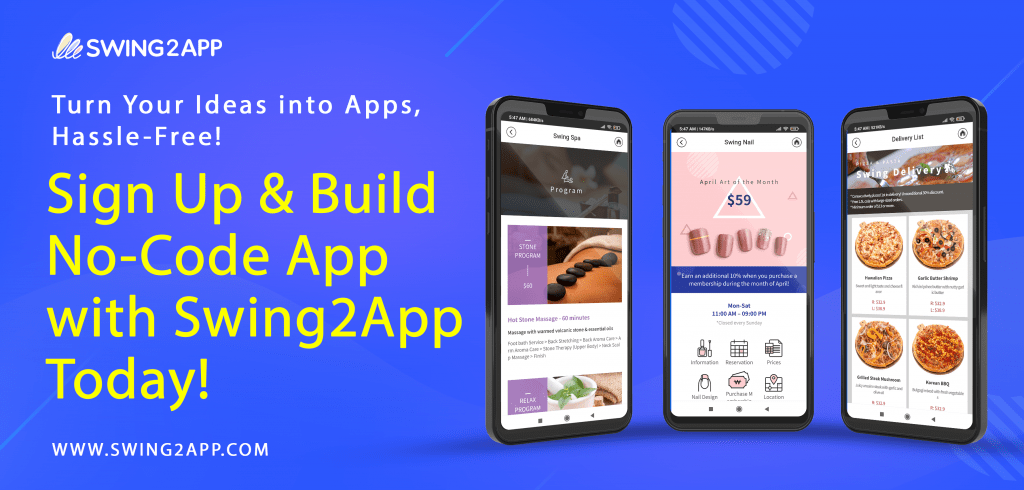
The common method for finding and installing iOS or Android apps — via the Apple App Store or Google Play Store — is now well known to everyone. Apps published on the App Store and Play Store are publicly available, meaning anyone can find and install your app on their device.
As developers have become increasingly aware of the need to distribute their apps outside of the traditional App Store, especially in order to limit the potential audiences for a particular app, distributing outside the App Store has grown in popularity. Businesses often look for such modes where only their employee have access to the company app. In response, both Apple and Google have provided an increasingly wide range of different distribution mechanisms to cater to use cases that require limiting access to more tailored audiences.
WHAT ARE UNLISTED OR PRIVATE APPS?
These are for companies and their employees only and aren’t available in stores, but rather shared via a link.
- Although unlisted Apps are still published through the App Store, only a direct link can be used to access them. These apps are not listed in any app-related categories, charts, search results, or other listings in the App Store. Apps that are not mentioned are regarded as hidden but not private.
- A private app is one that is exclusively accessible to users within an organization. Managed Google Play is entirely compatible with private apps. An organization can publish private apps to its managed Google Play store and remotely install private apps on users’ devices.
UNLISTED APP IN APPSTORE
The App Store is meant to publish apps for the general public that is accessible to all.
If you are building an app for the employees of a specific company, then you may want to restrict access to your app.
For business apps that don’t want public app distribution on the App Store, there are 3 possibilities.
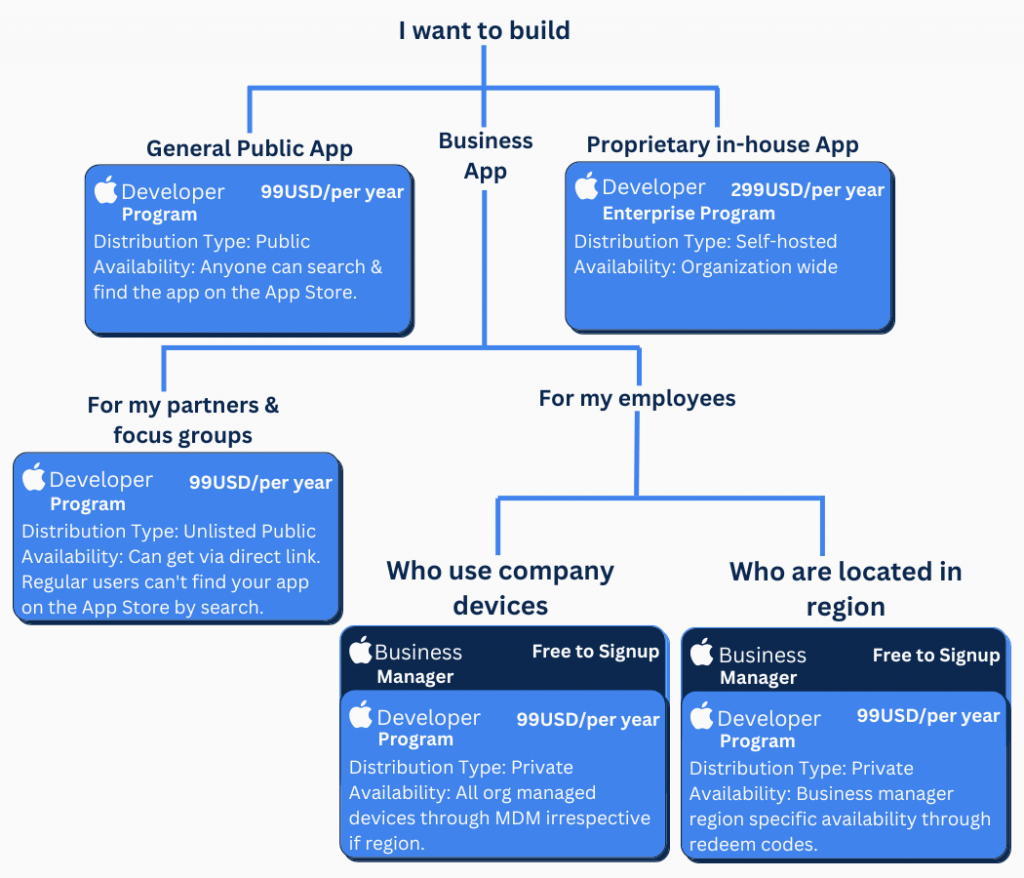
Apple gives 3 ways of app distribution outside their general store:
1) Custom Apps: Here you can distribute your app privately while using App Store Connect and Apple Business Manager.
You can deliver to certain partners, clients, etc. secretly and securely using Apple Business Manager and Apple School Manager. Additionally, you can give your internal staff access to exclusive apps.
Your app does not display in the public iOS App Store when it is distributed privately. As an alternative, you receive an infinite number of redemption links that you can distribute to your users. They can download your software from the App Store using these links.
That’s all. Your user doesn’t need to take any more action. They can start using your app right away and will automatically receive upgrades as you release newer versions. If you want to know how to secretly release your app through the App Store, keep reading.
2) In House distribution : Use an Apple Developer Enterprise Program to distribute the app outside of the app store, but with rigorous eligibility constraints. One of the requirements is to have 100 or more employees. The Apple Developer Enterprise Program subscription costs $299 per year.
Check Apple eligibility requirements
3) Unlisted app distribution: If your apps aren’t appropriate for public distribution, make them available as unlisted apps on the App Store that can only be found via a direct link. Apps for employee resources, partner sales tools, or research studies are a few examples of apps that may be suitable candidates for unlisted app distribution.
Neither the App Store nor the search results will show an unlisted app. The download link will be the only way to access the app.
NOTE: This mode of distribution is direct but not private because anyone with the download URL may still download an unlisted application.
For a fully private distribution, look at the Custom App distribution option and see what distribution method works best for your app.
Another important point to note is that even if the app is not visible, it is still distributed via App Store Connect and, therefore, must be compliant with the App Store Review guidelines .
HOW TO PUBLISH UNLISTED/PRIVATE APPS ON APPSTORE
In order to distribute your app through the public iOS App Store, you might consider the following options.
| | TestFlight | AdHoc | Enterprise (In-House) | Private Distribution (Custom Apps) | Unlisted App (added January 2022) |
| How to install | Install TestFlight app, then open invite link | Provide UDID and wait for signed build, then install via Safari | Install via Safari and accept developer profile in Settings.app before app will be able to launch | Click on a redemption link and install the app in the App Store | Click on a standard link and install the app in the App Store |
| Build Expiration | 90 days | 1 year | 1 year | Never | Never |
| Automatic Updates | Yes | No | No | Yes | Yes |
| Install Limit | 10,000 testers | 100 of each device type | Unlimited employees | Unlimited partners, clients, franchisees, and employees | Unlimited partners, clients, franchisees, and employees |
| Annual Cost | $99 | $99 | $299 | $99 | $99 |
| App Review | Less Strict | None | None | Less Strict |
Let’s discuss Private distribution as most businesses look for this option.
PRIVATE APP DISTRIBUTION (CUSTOM APPS)
Apps that haven’t yet been made available on the App Store can only use private app distribution. If you wish to publish existing software through private distribution, you must make a new bundle identifier.
Prerequisites
- Create a new app by going to App Store Connect. Then upload the build of your app.
- Choose Pricing and Availability from the left sidebar on your app’s page in App Store Connect.
- Select “Available for private distribution to particular organizations on Apple Business Manager or Apple School Manager” under Distribution for Business and Education by scrolling down to that section.
- You must enter at least one organization’s Organization ID, but you can always add more afterward. In Apple Business Manager, under Organization Info, you can locate the Organization ID for your company.
- Send your app for review when you’re ready.
Your app won’t be available in the public iOS App Store once it has been approved, but it will appear in Apple Business Manager for the organization(s) you specify!
Distributing the App to End Users
Each company that will distribute your app will need to set up an Apple Business Manager account. You’ll only create one account if you’re distributing an app to the staff at your business. If you have many clients who want to distribute to users in their business, they must create their own Apple Business Manager account.
On https://business.apple.com, click “Enroll now” to create an account. A few pages of simple forms regarding your business and your employees’ contact information must be filled out. Your company’s D-U-N-S number is the main piece of information you need to obtain before you can begin.
After submitting the form, you’ll need to wait a few days before hearing from Apple. The caller will inquire about your company briefly and obtain your verbal authorization to accept the Apple Business Manager conditions on behalf of your organisation. You’ll get an email with the subject “Thank you for verifying your organisation” after the call. To set up your account, you can follow the steps included in that email. Just make sure to use an email address that isn’t already linked with another Apple ID.
Getting the redemption links
Once you have an Apple Business Manager account, it’s very easy to get redemption codes.
- Go to Enrollment Information to enable Custom Apps.
- On the Custom Apps page, select your app, then select “Redemption Codes” as the license type.
- Enter the desired number of redemption codes and click “Get.”
- Under Redemption Codes, click Download to download a spreadsheet containing redemption codes and associated redemption links that you may send to users.
- Send each user the link and inform them to open it on their iPhone to download your private app without it being accessible to the general public!
UNLISTED APP DISTRIBUTION IN APP STORE
As of January 2022, you can distribute your app as an unlisted app, which allows you to link directly to your App Store product page instead of making it available on the general App Store. In contrast to the “Custom Apps” option, unlisted app distribution is easier to setup, and each user doesn’t need their own redemption link. For detailed process read Unlisted app distribution.
CREDIT: APPLE
BENEFITS OF UNLISTED APP DISTRIBUTION OVER PRIVATE APP DISTRIBUTION
Apple introduced the unlisted app feature in 2022 to simplify the limited audience app distribution process.
Discoverable only via a direct link
App Store apps that are hidden are unlisted. These apps don’t show up in search results, suggested apps, charts, or categories on the App Store. Businesses have the option of unlisting an app from the App Store and sharing a direct link with only their target market, allowing them to be the only ones to download and install it on their devices.
No Apple Business Manager Account Signup Required
To manage company-owned devices or distribute the app to customers in a specific region, businesses using the conventional private app distribution models are required to open an additional Apple Business Manager account. However, there aren’t any such limitations with the most recent unlisted distribution app model.
In-App Purchases Are Possible
In-app purchases are not supported by Apple Business Manager. However, users can make in-app purchases in unlisted apps.
Simplified App Review Process
Before the unlisted app feature, it was usual for an organisation to have conversations with the Apple review team to explain why their app is only for internal usage at their business and not for public distribution. However, a company can now buy a subscription to the Apple Developer Program in order to create the software and distribute it without being advertised on the App Store. The “Account Holder” for the Apple developer programme is responsible for ensuring adherence to the App Store publication requirements and submitting a form for approval.
PRIVATE APP IN ANDROID
Private distribution is the only option for apps that have not yet been made available on the Play Store. You must create a new bundle identifier if you want to publish an existing app through private distribution.
In Android you can create 2 types of private apps:
Google-hosted private apps
Google Play distributes the APK to users after you upload the APK for your private app to the Play Console. Applications hosted on Google Play benefit from the service’s dependability, security, and simplicity of management.
Externally(self) hosted private apps
APKs that are hosted externally are not transmitted to Google for inspection. The security of their content cannot, therefore, be ensured. When users access an app that is hosted externally, they are informed of this.
An externally hosted app is a personal app that has an APK hosted somewhere other than Google Play (such on your personal server, for instance). You (or the app’s developer) must upload a JSON file to the Play Console with the app’s metadata in order to distribute externally hosted apps through managed Google Play.
HOW TO PUBLISH PRIVATE APP ON GOOGLE PLAYSTORE
No matter how many apps your organization has, there are tools available to manage them all on the Play Store automatically. Google Play has a developer API that provides management of Play store listings, APKs, and more. Fastlane, a collection of app automation tools, was part of Google’s January 2017 acquisition of Twitter’s Fabric developer tool suite. Fastlane has the ability to sign/push apps to the Play store, handle beta deployments, and automate screenshots.
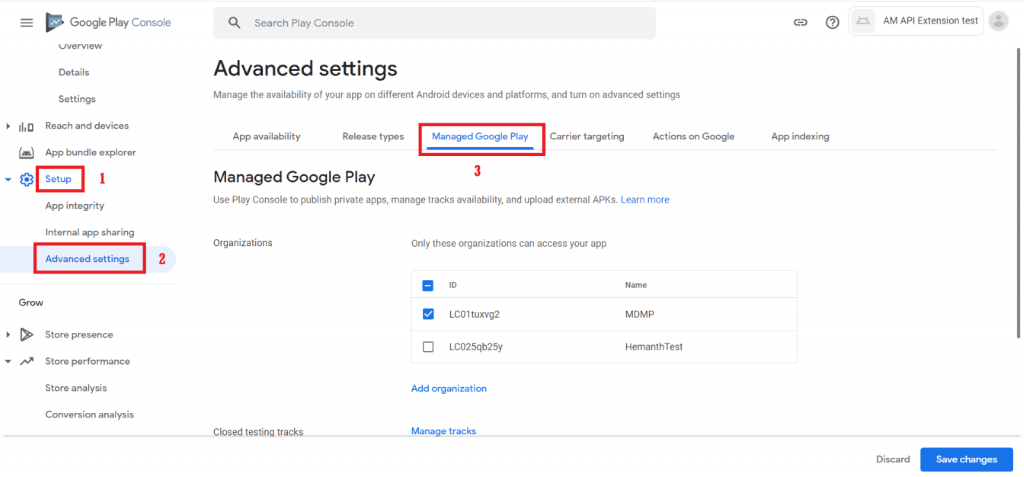
Additionally, Managed Google Play customers can create private hosted apps without passing a minimum version check thanks to the Custom App Publishing API. Managed Google Play is a marketplace for Android Enterprise offering support for private apps. Private apps are Android apps that are not public rather distributed only to internal users (via link).
Why this is important: The Custom App Publishing API, often known as the fastlane, considerably simplifies and minimises the friction associated with transitioning to Managed Google Play and connects with continuous integration tools and processes.
You also have other options to publish your private app on Google playstore:
OPTION 1: Publish private apps from the Admin console
You only need an Android application package (APK) and a title to upload and publish private apps in the admin panel. An organization-specific Play Console account is made when you publish a private app for the first time. Private apps are instantly approved for your company and usually available for distribution in less than ten minutes. Up to 15 private apps may be uploaded each day.
Further read how to Publish private apps from the Admin console
OPTION 2: Publish private apps from the Play Console
You must sign up for a Google Play developer account in order to publish private apps from the Play Console. You are granted the necessary administrator rights through the account in order to upload and publish personal apps to controlled Google Play. Then, you may deploy these apps to consumers via your EMM console.
Private apps must have certain settings to make sure that only people within your company can access them and that they are simple to find. If you’re hosting the app yourself rather than Google, you’ll also need to specify a few options. Only an Android application package (APK) and a title are needed to submit and distribute private apps.
Note: The Admin console allows you to publish private apps if Google is your EMM provider. You might be able to publish private apps from your EMM console if you utilize a third-party EMM supplier but for that you need the verify this with them.
Read to know the entire process to publish private apps from the Play Console.
Enterprise developer: Private app publishing guide
CREATE A NO-CODE APP FOR YOUR COMPANY WITH SWING2APP
It takes only a few weeks to create a no-code private app with Swing2App and you’ll be able to save a lot of money. Furthermore, you do not need to worry about all the unlisted/private app upload processes, we handle the entire process for you and ensure you publish your app without any issues.
To stay connected with your employees, you can create a professional app for your business.
HOW TO CREATE A PRIVATE APP WITH SWING2APP
You can create 2 types of Private apps with Swing2App no-code app maker:
1. Available after the administrator approval: Users can use the app only after the admin has approved them.
The user simply needs to sign up when the window appears when they run the app, and app users can use the app as soon as the administrator approves.
Steps to create private app (Admin approval)
- Go to Manager.
- Select Services.
- Click on Policy.
- Click Add Subscription Policy.
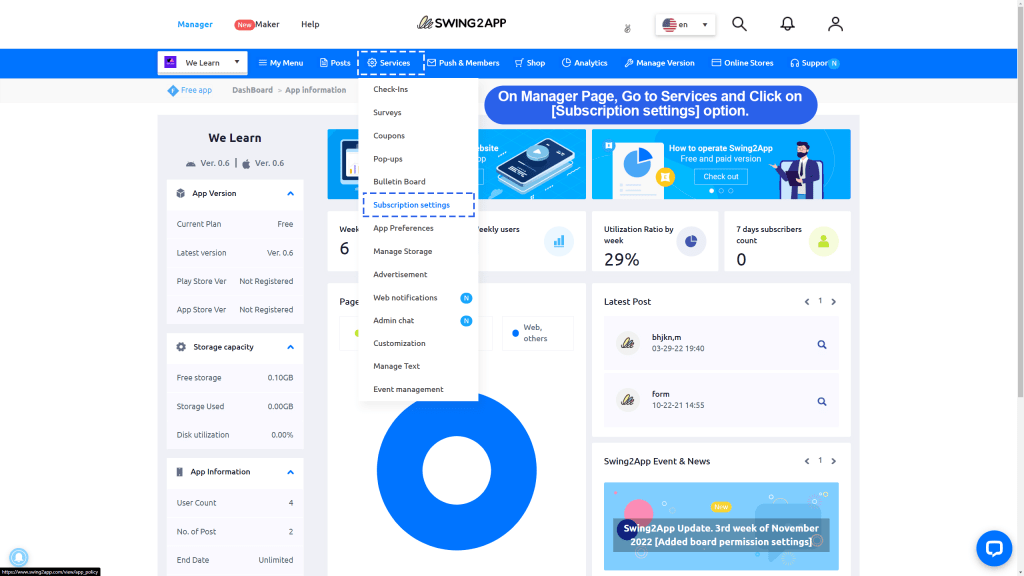
You’ll be directed to Membership Policy Page, where you can edit your policy.
Select Add Subscription Policy -> Check Private (Available after registration and admin’s approval) box [Under App Privacy] -> Fill Details Required -> Click on [Save] button.
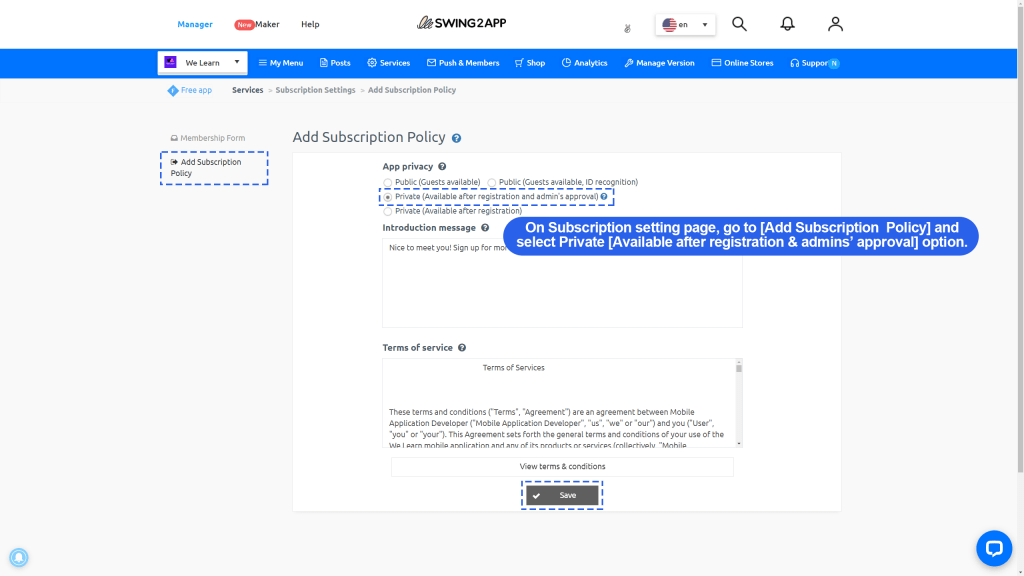
To give access to users who sign up you need to give them permission:
(Manager -> Go to Push & Members -> Click on Members View -> Give Permission to users)
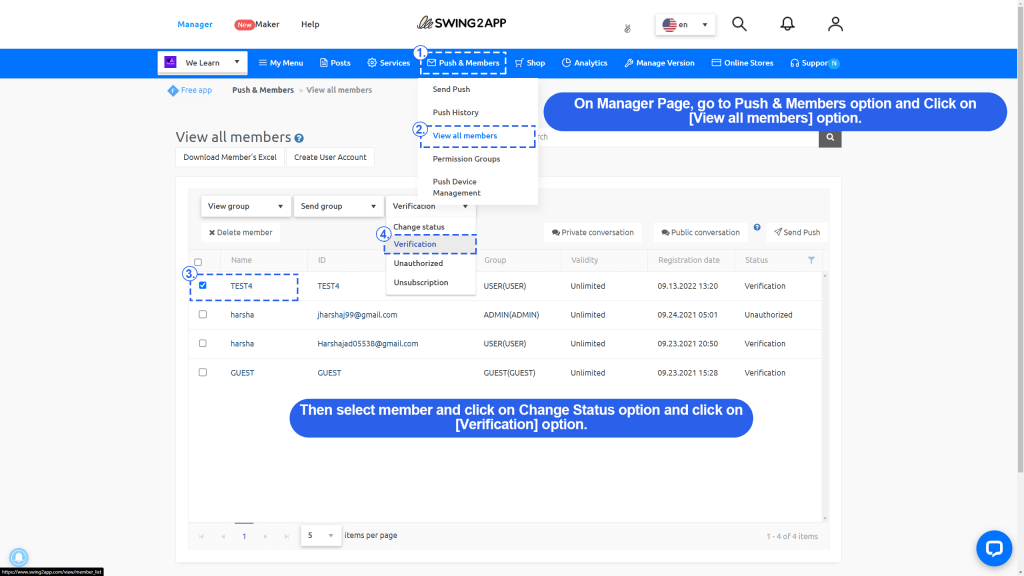
If you haven’t given the permission user will be displayed a message like below image and will not have access to your app.

2. Available after signing up: Users can access the app after signing up, no need for admin approval.
Steps to create private app (Available after registration)
- Go to Manager.
- Select Services.
- Click on Policy.
- Click Add Subscription Policy.
Select Add Subscription Policy -> Check Private (Available after registration) box [under App Privacy] -> Fill Details Required -> Click on [Save] button.
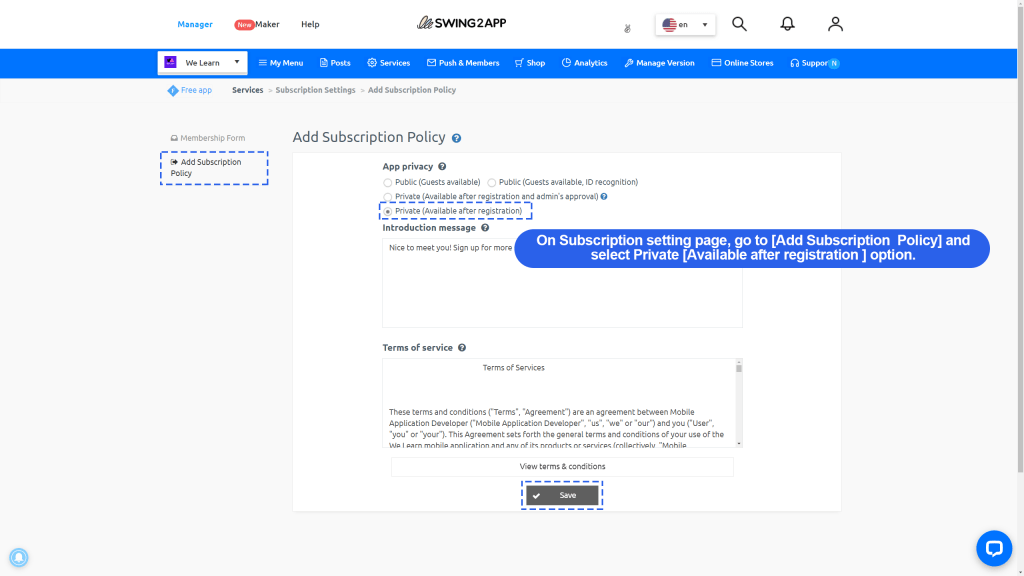
Swing2App provides a variety of features that can be added to your business app, these are:
- Chat-to stay connected with your employees
- Push notification for announcements- so that everyone is up to date with new task or projects
- Event Calander- this is one of the most important features as it relieves you from the stress of scheduling meetings and informing everyone about it
- Training- you can also conduct online training sessions that can remain available on the app and employees can access them any time
- Reporting- apps make employee reporting much easier
- Employee Survey and feedback by using Swing2App Survey bulletin board
In addition to these features, the list is endless as any feature can be added according to the needs of your company.
Additionally, you will be able to create apps for iOS and Android simultaneously for the same cost and time. Isn’t this great? Why wait any longer?
]]>Most businesses understand how important it is to develop apps. It’s not realistic for everyone to wait a year or more for the launch of their mobile app.
In some cases, businesses must launch apps quickly in order to take advantage of opportunities. Businesses are increasingly using their own apps to increase sales or to provide customers with an alternative platform for using their tools and services. In fact, 42% of millennial-owned businesses have their own apps.
However, while a mobile app can generate quite a bit of revenue, quickly launching a successful app is made more challenging by its low barrier to entry.
According to Alex Ahlund, former CEO of AppVee and AndroidApps, the average cost to develop a mobile app is $6,453 – and can go as high as $150,000 depending on its complexity. Furthermore, the average timeline for app development before launch is at least six months. Nevertheless, this guide will show you how to speed up the process.
WHY A SUCCESSFUL MOBILE APP LAUNCH IS SO IMPORTANT
Your mobile app launch can either determine or jeopardize the long- and short-term success of your app.
You risk missing out on some time-sensitive opportunities that directly affect app downloads and usage if you wait too long to launch the app. On the other hand, speeding through app development and releasing a subpar product might result in customers never using the app again due to a negative user experience.
The best method to make sure your app is successful for years to come is to have a smooth app launch with an app that is free of bugs and provides a seamless user experience. By putting the user’s needs first, you can increase the lifetime value of each individual that installs the app and keep them coming back to use it.
If your app doesn’t function as planned, even launching it in a matter of weeks rather than months won’t help. Therefore, you must strike a balance between a quick app launch and a top-notch product.
To be honest, certain apps just cannot be created in a matter of weeks or months. It is impractical to schedule a three-month app development period if you’re trying to build the next Facebook, Uber, or YouTube. App launches for games, augmented reality, and virtual reality applications are often prolonged.
However, the great majority of business applications may be released rapidly without compromising the app’s quality provided the proper technology is used and a tried-and-true success formula is followed (by following the steps in this guide).
Many professional business apps have been developed with Swing2App. We have seen our clients launch apps faster than the typical app development cycle, and we are aware of what it takes to be successful in this field.
5 STEPS FOR FAST APP LAUNCHES
The key to quick and effective app launches is simplicity. The entire procedure may be summed up in just five simple steps:
Step 1: Market Research
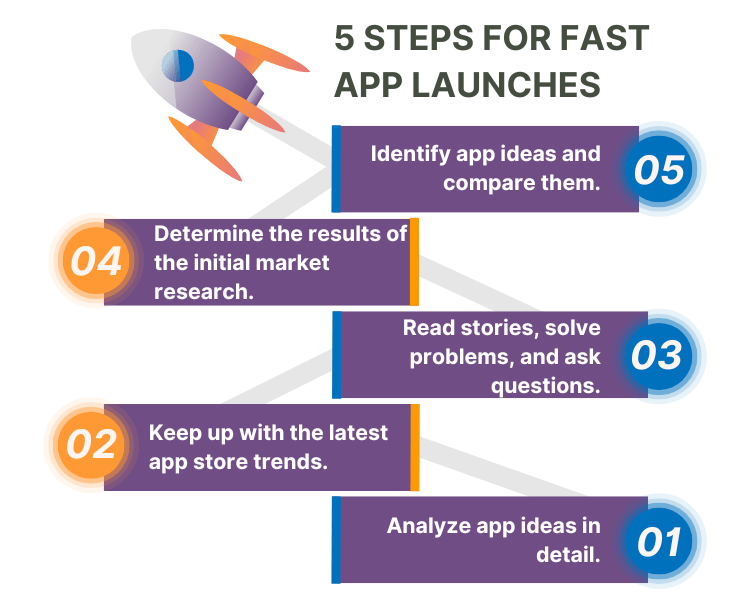
According to estimates, the Apple App Store will have 1,800,000 applications overall as of January 2020. And even those figures don’t include Android applications available in the Windows and Google app stores.
How does this affect you, then? There is definitely already plenty of competition for you. In order to genuinely distinguish your app, undertaking an in-depth market analysis is vital.
An app concept may be created by anyone. But before you start creating anything, you really have to confirm your concept through market analysis. Because the app developers ignored this phase, so many mobile apps fall short of expectations.
You may save time and money by taking the time to learn about your target market and target audience. You may discover that features or capabilities you first considered significant aren’t actually required by the app. So, you may skip those features entirely and launch the app quickly.
Consider the case of your small gift store. In order to increase mobile commerce sales during the busy Christmas season, you may want to create an app, that would prove to be a great idea.
You can track customer purchases and award them loyalty points, just like Starbucks and do much more with a business app. But after doing market research, you might find that the majority of your customer doesn’t want, need, or plan to use that feature of your business app.
You will save a lot of time and money by dropping this feature, enabling you to launch the app more quickly and affordably.
You may learn more about your competition, potential users, present and past customers, and comparable apps that are already available in the market by conducting market research.
Your ability to distinguish your application from others on the Apple App Store and Google Play Store will provide you an advantage over others.
Step 2: Pre-plan & organize
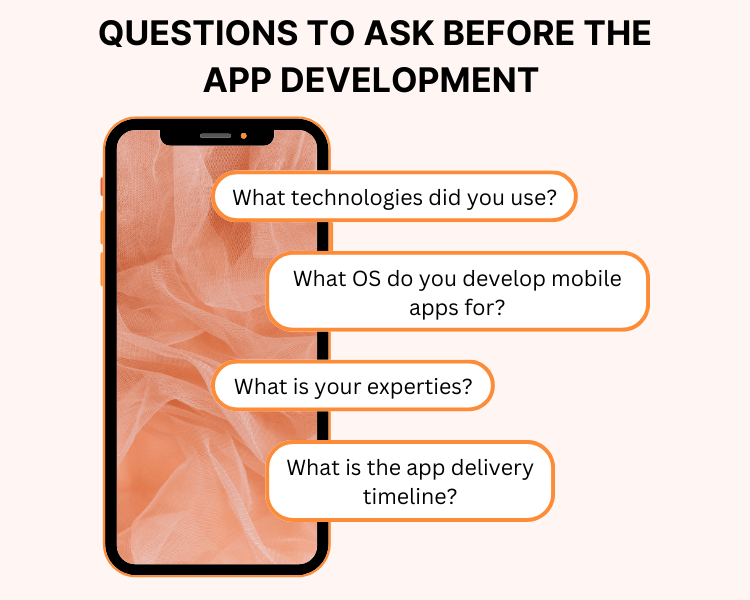
After completing the market research phase, you must develop a sound plan. Before you begin creating anything, use the following points as a checklist for the quick launch of your app:
- Select your app launch app stores (iOS, Android or both)
- Code your app or hire mobile app developers or use Swing2App
- Decide your app development budget
- Select tentative launch the app date
- Create a free app or Subscription based app
- Monetize app or not, if yes then how?
You are not yet prepared to develop and release the app if you don’t have the answers to these queries.
I won’t delve too far into any of those questions for the sake of this blog. Instead, we want to concentrate our efforts on quickly launching a high-quality app.
However, we have a lot of helpful articles and tutorials that will help you in organizing and build your app. Here are some articles related to the above-mentioned queries:
IOS Vs Android: Which Is Suitable For Your First App?
No-Code App Development: What Is No Code? & Benefits Of No-Code App Maker.
How To Publish An Android App On Google Play Store: A Step-By-Step Guide
How To Develop A Mobile App For Android & IOS
How To Reduce Your App Development Cost?
How To Submit Your App To The App Store In 2022
Step 3: Focus on the Key Features of your Mobile app
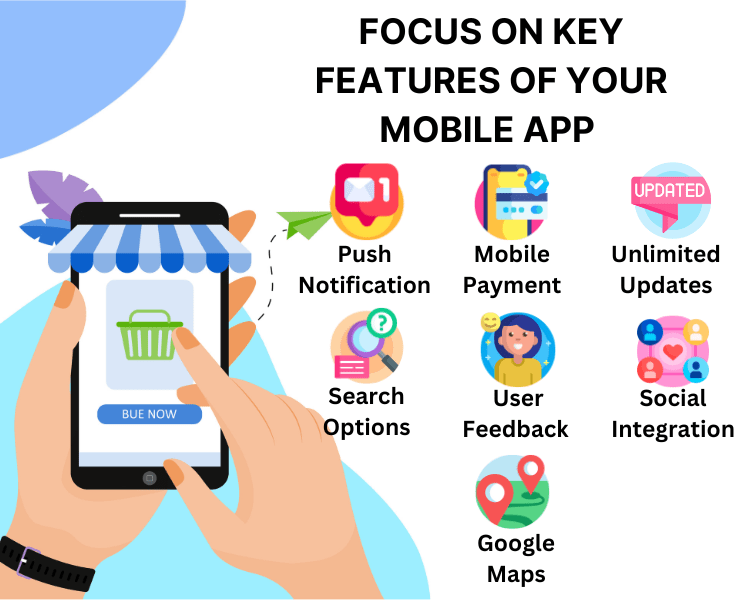
You ought to know exactly how you plan to make an app by this point. It’s time to concentrate on the functionality of the app, regardless of whether you’re going to develop it yourself or contract out the job to an app development firm.
Perhaps the most crucial stage when launching an app quickly is this one.
People often overestimate the usefulness of mobile app features. Instead of the “must-haves,” they place too much emphasis on the “nice-to-haves.”
Begin by making a list of the features that your app users need to solve a problem or achieve a goal.
There may be several distinct ideas on your initial list of features. But it doesn’t always imply you’ll use them all. Start crossing off the items on the list one at a time that doesn’t serve the main goal of the app.
Consider the scenario where you are developing an app for your restaurant. You may put lots of different functions in the app. But what is your real intention for your business app development?
A dine-in restaurant rewards app will appear very different & have different core features than a mobile ordering app for restaurants.
Wouldn’t it be amazing if the app could access the user’s camera and contact list? Some of you might feel this would be a great add-on. But is that genuinely required for the core motive of the app? Most likely not.
Step 4: MVP creation
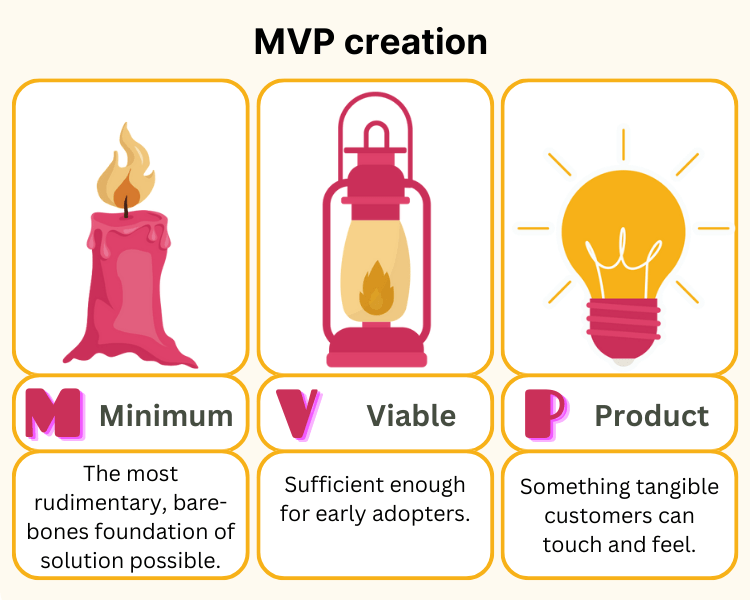
The term MVP (minimum viable product) is often used in connection with app analysis and beta testing. However, if you’re on a tight app development schedule, you may really use an MVP for your initial launch on the app stores.
By developing an MVP, you’re bringing the key features that were figured out in the previous phase into production.
You won’t be concerned about the excessive features. Just concentrate on the essential features, and you’ll have a functioning app that serves its main goals.
Consider developing an e-commerce app as a complement to your online store. Mobile payment options are the app’s main goal.
Therefore, even though a customer loyalty scheme or a mobile customer referral program sounds like fantastic features, neither would be included in the MVP. Instead, you would just provide an app with the most basic e-commerce purchase features.
Simply make sure the software has a built-in payment gateway (PayPal, Google Pay, etc.) and links with your online business.
Users can later be given the option to personalize their profiles by adding details like their birthdays, favorite goods, and the option to share items with friends. However, the MVP is only for the core app features.
Step 5: Testing, stabilization, & Beta release
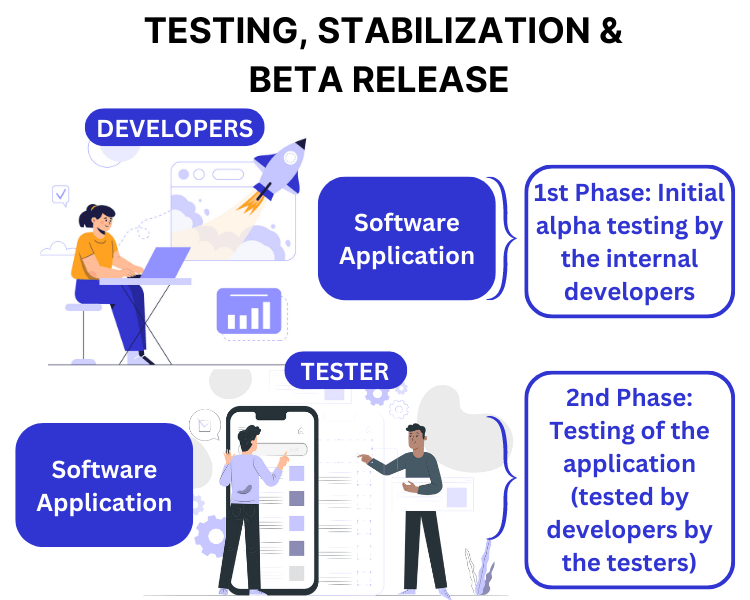
At this stage, defects are found and corrected, and the product is stabilized—everything is made completely release-ready. Experts in quality control examine the app’s functionality across a variety of platforms and operating systems using specialized services.
A mistake in launching your mobile app quickly may be quite expensive. Apps are available on Google Play in a matter of hours, and on the App Store in a matter of weeks. Errors trigger strong negative responses from users, who give products terrible ratings and reviews. Due of this, new users decide not to download the app after seeing it. This step of the mobile app launch process is very critical.
We highly recommend giving a limited set of beta testers access to your app’s pre-final version before submitting it to the app stores. To test new apps before they are released to the public, you may either distribute this version to testers or utilize tools that were designed especially for the purpose: Apple’s TestFlight and Google Play’s Play Console. A beta test is used to address any lingering problems a few weeks before the official launch.
Step 6: Prepare for Launch
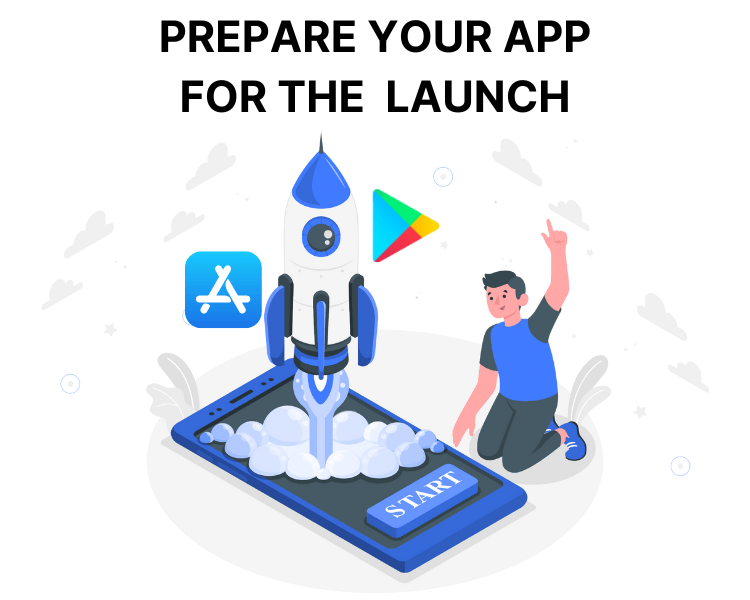
While the MVP development is still ongoing, you may begin preparing your app for launch by promoting it.
Waiting till the app development is finished to start with this step is just going to add unnecessary length to your launch timeline. Examples of preparations include:
- Make a landing page for the iOS app and the Android app.
- In a blog article, promote your app.
- Create a buzz about the app on your social media pages.
- Create screenshots of the software to be used in promotional materials.
- Utilize app store optimization (ASO) best practices to be ready for app store search
- When launching an app, be aware of the variations between iOS and Android applications.
You may always refer to free and paid mobile applications for inspiration and take ideas from their marketing techniques if you’re stuck on any of these preparation procedures.
This allows you to launch your app quickly, as soon as development is complete.
QUICK APP LAUNCH WITH SWING2APP
Swing2App is the best no-code app builder for those looking to speed up their app development without sacrificing quality.
It is the easiest way for DIY users to make their own apps without writing a single line of code with Swing2App no-code app builder.
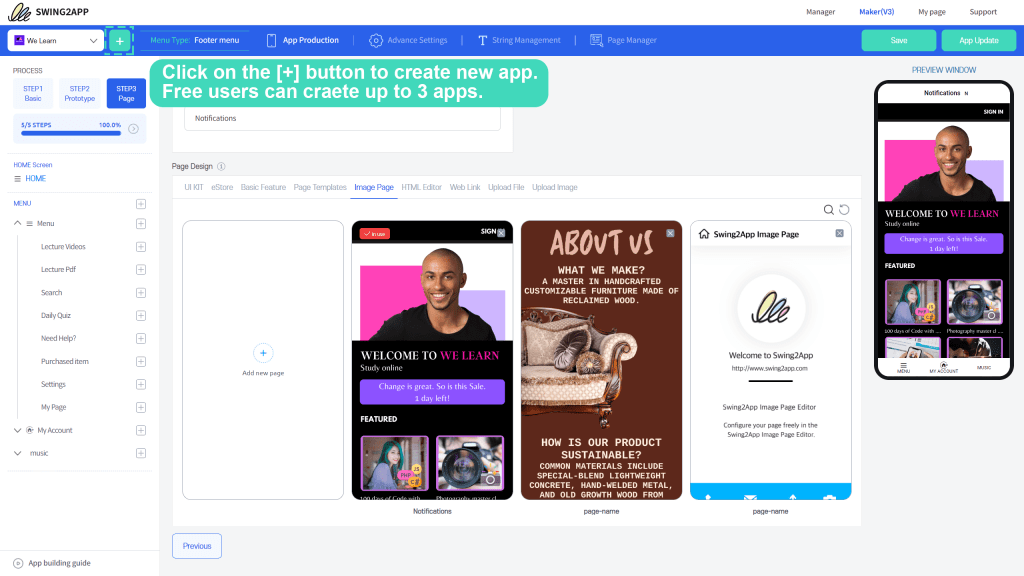
Our platform takes care of all the backend app requirements. It’s just a matter of adding your features and customizing the content.
Swing2App’s app maker is the best way to launch iOS and Android apps. With its easy-to-use interface and limitless scalability, it will fit any need.
With just a few clicks, you can get started in seconds. Simply select a template and then you can add features, and menus by adding the required bulletin boards (chat, calendar, Google maps, and much more).
With Swing2App, you can also add custom functionality. So, if you need something that’s highly customized and can’t find it on our platform, we can also create custom features for you.
As soon as the app is built, we will take care of the app launch on both the Apple & Play store. You just need to click “App Creation Request” when the app creation is completed.
Swing2App simplifies the process of launching an app quickly and at a fraction of the cost of traditional development. The app can be maintained post-launch and features can be added later on. It is therefore possible to begin with basic features and then add more advanced functions in months or even years to follow.
Swing2App custom app development
In case you don’t want to be involved in the development process and would rather outsource it, you can look for an app development company that can help launch your mobile app quickly.
There is no better solution than Swing2App’s no-code platform.
On top of Swing2App’s existing no-code app development platform, Swing2App offers custom app development. As a result, our in-house custom development team does not have to start from scratch.
When compared with hiring app developers or assembling an internal product team, this gives you a significant advantage.
As part of the process, we will work with you to ensure that the app meets your business goals, budget, and timeline.
FINAL THOUGHTS ON A SUCCESSFUL LAUNCH FOR MOBILE APPS
For many businesses and entrepreneurs, launching an app quickly is crucial. Ensure the quality of your final product doesn’t suffer due to your development timeline.
By working on your app marketing strategy and promotional materials during app development, you can also save time and prepare for a successful and quick app launch. When you are starting your app, you should focus on its core features and functionality. After the app launches, more features can always be added.
]]>App creation completion is just the beginning of the app development process, not the end. The next step is to deliver your app to your users, and for this, you need to publish the app in stores.
For the app publishing service provided by these app stores charge a fee for app uploading and in-app purchases. This is how app stores make their money, while helping your app to reach a global audience.
In this post, we’re looking at Apple App Store fees, and Google Play Store fees, and highlighting the differences between the Appstore and google play stores.
What is an App Store?
An app store is an online platform where app developers publish their apps and customers download or purchase apps. The concept of creating an app store came only in 2008 when Both AppStore and Google Play store were launched. The reason behind the creation of App stores became familiar with the rise of mobile phones and tablets, but now it covers even desktop operating systems and Web browsers within its ambit. Web browsers like Mozilla and Google Chrome have their own app stores, from where users can download and install Web apps.
An App Store offers a variety of free and commercial apps, pre-approved for use on users’ devices. They can browse the app, purchase, download and install, and update it through their device’s app store.
All the major mobile operating system vendors, including Google, Microsoft, and Apple have their app stores, from where users can control the apps available on app stores. Additionally, some third-party apps are available online, such as Cydia for jailbroken Apple iOS devices and Amazon Appstore for Android devices.
Difference Between App Store vs Google Play Store
It is true that both the app stores have the same objective — to provide their users with quality apps, however, they surely have some differences.
In terms of revenue, Apple App Store leads, and unlike Google Play, it is also available in China. In addition, iOS app users are used to paying for their iOS apps, which contributes to Apple’s revenue.
On the other hand, Google Play differs is more developer friendly than Apple App Store as the app approval process is not that strict.
Additionally, Google Play charges developers only a one-time registration fee of $25 to publish an app, but Apple has a $99 yearly developer fee (to be paid every year if you want your app on Apple AppStore.
Overall Comparison
| iOS | Android |
| Lengthy app submission process | The submission process is simple. |
| High cost for submission $99/year. | Costs $25 to submit an app. |
| Valuable feedback from the App review team. | Less guidance when an app is rejected, no detailed feedback |
| Getting approval can take a long time. | App approval time is 3-4 days. |
| High competition | The platform is highly fragmented. |
| Users generally pay for apps. | The platform is highly fragmented. |
Approval Process: Google Play Store Is Easier
| iOS | Android |
| The approval process can be long and drawn out. | Easy approval process. |
| App approval process is strict, must be aware of the rules and ensure apps are error-free. | Developers are free to experiment and be more creative. |
| Apps are high quality therefore standout | Less high-quality apps can head out to users. |
| Review team gives good and hard-hitting, feedback. | With so many apps let in, it can be hard to stand out. |
Visibility: Pros and Cons for Both Platforms
| iOS | Android |
| Hugely popular platform for Apple devices with great visibility. | Visibility is lower but reach is enhanced in terms of number of potential customers. |
| The keyword search might limit visibility. | The search function boosts visibility. |
Costs and Monetization: Google Play store Is Cheaper Initially
| iOS | Android |
| $99 per year developer fee. | A one-time $25 developer fee. |
| App Store customers are used to paying for apps. | Android customers prefer to download free apps. |
| Developers get 70% of the revenue. (in-app purchases) | Android customers prefer to download free apps. |
Advantages of Apple App Store and Google Play Store
Apple’s App Store is unique from a user’s perspective because it delivers high-quality, thoroughly checked apps. Additionally, customers can safely enjoy iOS apps with budget-friendly prices from the list of available apps.
An advantage for Apple App Store users would be a disadvantage for Google Play Store users. There are many more free apps available for Android users as compared to Apple.
To summarise:
| iOS | Android | |
| Target Audience ROI | More valuable | Less valuable |
| Development Time | 7 Days average | 3 days |
| App Development Language | Swift | Java, Kotlin |
| Design Policy | Specified Requirement | Flexible |
| IDE | Xcode | Android Studio |
| Complexity | High | Average |
| App Store Acceptance | Long app review | Short app review |
Types of developer programs in google and Appstore
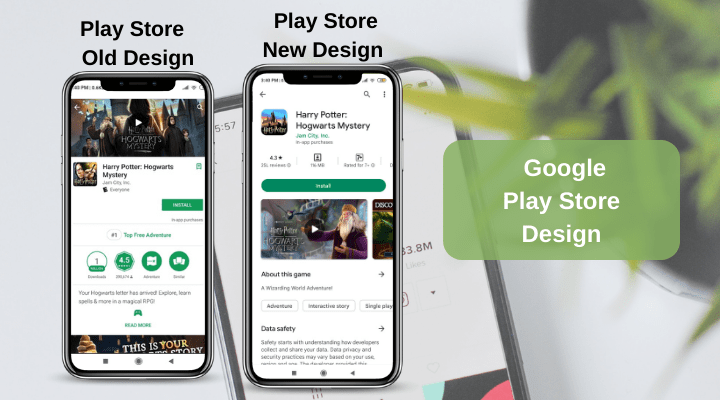
Google charges a one-time $25 fee to get a developer account on Google Play, which lets you publish Android apps on the Google Play Store. Free apps are listed at no cost, and Google takes 30% of the revenues of paid apps for “billing settlement fees”. App developers can develop Android apps using Windows, Linux, or a Mac.
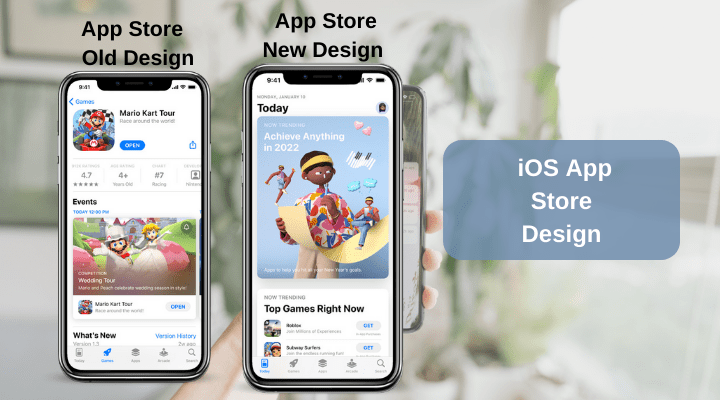
Appstore provides various developer programs suited for diverse needs. These include:
- Apple Developer Program – $99/year
- App Store Small Business Program
- Apple Developer Enterprise Program – $299/year
- Apple Video Partner Program
- iOS Developer University Program
- MFi Program
- News Partner Program
- Security Research Device Program
Steps to publish an app on the App Store
Users must pay the app store fee as a cost to publish their apps, to make them available for download and installation on the Apple AppStore. Let’s go through the following steps to make sure that you publish your app on an app store successfully. We will talk about two kinds of app stores where you can submit your app to the Apple App Store and Google Play Store.
Apple App Store
With the Apple App Store, you can get the latest Apple accessories and products in a more personalized way. With the references based on the Apple product you currently own, you can upgrade your iPhone to a new one and discover the accessories compatible with your device.
Publish your app on the Apple App Store by following these steps:
- Submit App Information
- Create a Bundle Identifier
- App Store Production Certificate
- Create a Production Provisioning Profile
- Create App Store Listing
- Make the release build
- Fill in Version Information
- Submit Version for Review
- Release the app
Gather the pre-required information such as name and icon of the app, detailed features, separate keywords, support, marketing, and privacy policy URLs, rating based questionnaire, copyright and demo account. Go through the above-mentioned steps and follow them to submit your app to the Apple App Store successfully.
Further read: How To Submit Your App To The App Store In 2022
Google Play Store
Google Play Store is one of the largest platforms for selling, promoting and distributing Android apps. It is available on the Home Screen on most of the Android devices.
Google Play Store also has its own set of rules and regulations which must be followed to avoid app rejection. Let us check out the steps to get the app published on Google Play Store:
- Create a Developer Account
- Create Payments Center Profile
- Create an App
- Prepare Store Listing such as product details, graphic assets, languages and translations, categorization, contact details, privacy policy, and others required
- Upload Android Package Kit to an App release
- Provide content rating
- Set up Pricing and Distribution
- Rollout Release to Publish Your App
Follow the above-listed steps to get the app published on the Google Play Store.
Further read: How to submit app on Google Play Store
How do Google Play Store and Apple App Store make money?
App stores typically charge 30% commission for in-app purchases within your app. Specifically, app store revenue comes from commissions on:
- in-app purchases;
- subscriptions;
- downloading paid apps.
Note: In-app purchases (IAP) include any transactions performed within the app, like booking a room in a hotel app. It includes only digital goods and not physical goods. If you use advertising as your app monetization strategy, then app stores cannot charge you for that.
Read more about In-App Purchases On Android & IOS.
Apple App Store fees
With the Apple AppStore app distribution service, you get access to over a billion customers across the globe on iPhone, iPad, Mac, Apple TV, and Apple Watch. There is no app hosting fee, however; there is an annual fee of $99 for the Apple Developer Program and $299 for the enterprise version. Additionally, Apple will take a share of your in-app purchase (digital goods) revenues.
Now you might me thinking -> how much percentage does Apple take from your app revenue? There was a 30% commission on all paid apps and in-app purchases on the App Store until November 2020. However, since then, two rates have been available:
- 30% share if you make more than $1 million in annual net app revenue;
- 15% share if:
- You make less than $1 million in annual app revenue; when you are new to the App Store;
- you’re after 12 months of service in the App Store with a subscription-based app.

Note: To qualify for the 15% app store commission fee, apply for the App Store Small Business Program that launched on January 1, 2021. It is estimated that 98% of app developers qualify for this Program, according to Sensor Tower.
If you’re wondering how Apple ensures to get a share of your app revenue, here’s the answer:
“If you want to unlock features or functionality within your app (by way of example: subscriptions, in-game currencies, game levels, access to premium content, or unlocking a full version), you must use in-app purchase.” – App Store Review Guidelines
Google Play Store fees
Google also takes 30% of your app revenue, and after a year, it decreases to 15% of subscription revenue. The developer account also requires a one-time registration fee of $25. Understanding the financial aspects of your app model can help you optimize your app for the Google Play Store.
Like Apple, Google also legally obligates you to share your app revenue. Google’s guidelines are as follows:
“Developers charging for apps and downloads from Google Play must use Google Play’s payment system. For in-app purchases, developers must use Google Play In-app Billing as the payment method except if the payment is solely for physical products or digital content.” – Google Play Developer Distribution Agreement
To summarise:
| Apple App Store | Google Play Store | |
| App upload fee | $99 annual fee for the Apple Developer Program $299 annual fee for the enterprise version | One-time $25 registration fee for a developer account |
| In-app payments commission | 30% for apps and in-app products 15% for subscriptions after 12 months | 30% for apps and in-app products 15% for subscriptions after 12 months |
Conclusion
What is better: Play Store or App Store? Surely, it is a constant clash between two giants in the app development industry. A variety of different apps can be found in the Google Play Store and Apple App Store, both of which are thriving marketplaces. Furthermore, their app stores offer excellent resources and monetization opportunities for developers as well as convenience for Android and iOS users.
Both app stores have many positive aspects as well as some downsides that could be improved. Taking into account the Apple App Store vs Google Play Store contest, we can easily conclude that it is a tie.
]]>It can be a hassle to submit your app on Google Play Store, especially if your app gets rejected without you knowing why or how to fix the problem.
Unlike Apple’s approval process, Android’s approval process is less stringent and more time-consuming, as it utilizes both experts and automated tools. Although android is less strict than iOS, many app developers still encounter app rejections.
According to Apple, over 150,000 applications were rejected last year for breaking the company’s privacy policies.
Apple claims to have rejected over 1 million app submissions due to unlawful, hazardous, harmful, or objectionable material, though it does not provide a time limit.
Google also rejected nearly 55% More Android Apps in 2018 than 2017 as it formed more strict policies to maintain the quality of play store.
Checks are made to make sure the app does not violate any of Google’s policies by using review algorithms. Then, an internal team of reviewers examines the app. A review typically takes several hours.
Did Google reject your app on the Play Store lately? It’s actually not a big deal and it can be rectified fairly easily. Apps are getting declined quite frequently by Google these days. Typically, apps are rejected if either they do not comply with the publishing guidelines, or they are underperforming. Currently, Google has tightened its approval process for apps in order to offer users bug-free apps. Our smartphones have been spared from damage and data theft by removing such apps from the play store.

To understand how this problem can be resolved, let’s first examine why it occurs. There are a number of app rejection reasons that one should consider before getting it published on the Play Store. You may feel scared about your apps being declined after so much effort, but you can fix it.
We will go through the top reasons why your app might get rejected and how to solve them.
Top reasons Your App Could Be Rejected by Google
1. Issues with the quality of the design
Google provides design guidelines to assist app developers in adhering to all of the basic principles of effective app UI design. You won’t have to worry about your app being rejected by the Play Store if you make sure it follows these standards.
If you follow the guidelines when it comes to colour, fonts, and images, your app will be readily released on the Play Store, or it will be rejected.

Solution
If your app is rejected due to design flaws, we propose spending some money to have it redesigned according to the shared requirements. In this situation, it is the finest viable solution.
However, when you create an app with Swing2App, you will not have to worry about the quality, design, or any other aspect of the app. No-code apps can now be created in much less time with Swing2App, and that too for both iOS and Android.
After app creation, you can leave the app store or play store publishing to us so you can relax. We will make sure that your app is published promptly, and even if it is rejected, we will help you to fix the problem.
Read more about Swing2App no-code mobile app builder.
2. Intellectual Property Rights violation
Infringing upon the intellectual property rights of another mobile application, particularly in a patent or trademark form, is a serious offense. In case you are partnering with another entity and using their trademarks with their consent, be sure to produce their logo as the appropriate documentation will prevent your app from being rejected.
Copyright issues are very strictly monitored by Google. Make sure you don’t violate them. Your app shouldn’t be an imitation of a popular app. Originality should guide your design and coding. It is common for us to use a trademarked title for our app, either intentionally or by mistake, but this is not allowed by Google.

Solution
If your app is rejected because of copyright/trademark issues, simply review the title, description, and images of your app and remove any names that are protected by copyright. However, if you have received permission from the owner, Google will approve the listing with proper proof.
3. Inappropriate app content
Your app will be rejected if it contains graphic violence, racist or sexual commentary or any other inflammatory content.
Any mature content in the description should be clearly identified at the time of rating. Trying to hide that fact or considering it less important will eventually result in your app being rejected by Google.

Solution
If your app is rejected due to inappropriate content, accept the rejection with care. Do not try the same thing with any other apps linked to your account. Your Google Play Store account will be permanently terminated if you violate this guideline repeatedly. For the app which has been previously rejected, publish it with a new account and be careful about spamming this time. Ensure the address on this account is different from the one on the previous account, and don’t link them together in any way.
4. Improper App Rating
When publishing your app to the Google Play Store, make sure to include the app’s rating. Google’s Play Store has an app content rating function that tells you what age category the app is appropriate for.
However, you can’t just pick a rating on your own. You must complete a questionnaire, after which the app will be rated.
You should provide all relevant information about your app and ensure that it has been properly graded for the intended audience. People frequently try to deceive the moderator by providing false information, and as a result, their app is underrated.

Solution
Google offers a simple solution by providing you a second chance to complete the questionnaire. This is a once-in-a-lifetime opportunity for you to supply all of the necessary information about your app and have it properly rated on Google’s Play Store. If you keep making this error, your app will be permanently rejected from the store, rather than being unrated.
5. Suspicious Products
The Play Store will reject your mobile app outright if it poses any threat to the user’s data security or privacy. Google will detect and reject your app if it contains malware, a Trojan horse, or any other flaw or virus that is mentioned in the description or within the app.

Solution
Make sure that all of the URLs and ad networks you utilise in your app are safe and free of viruses. It’s against Google’s standards if these adverts or links lead to something questionable or harmful. If your app has previously been rejected, attempt to remove any viruses and provide a privacy policy if the user is asking for personal information. After that, create a new account and publish an app.
6. Unfinished Versions and Bugs
During the review process, your app is put to the test. If it has any flaws or problems while performing, reviewers will chuck it aside. It’s a reasonable reason for Google to reject an app since it wants to maintain the high quality of applications accessible to customers on the platform.
When customers download an app after hours of searching on the Play Store, they want it to perform smoothly. Users may become frustrated if an app fails every now and then. Therefore, Google does not accept such applications in its store, it becomes one of the primary causes of app rejected by Google.

Solution
Test your app till you’re completely happy with its capabilities. Ascertain that the app has been thoroughly tested in accordance with the Play Store’s criteria. Before you publish your app to the public, make sure it’s fully working. If your app has already been rejected, fix any technical issues and resubmit it.
Wrapping It Up
I hope that this article has provided you with a comprehensive understanding of the various reasons why your Android mobile app may be rejected by the Google Play Store.
There are a variety of additional causes for app rejections, however, the one mentioned above is the most fundamental and is frequently overlooked by developers. Because Google employs both a manual and an automated app review system, keeping the pace of the developer standards might save you time and money.
Build your app using a sophisticated app builder that delivers feature-rich, fully functional apps to make app publication easier and more comfortable for you.
Swing2App is the best no-code app builder where you can create a well-designed app from scratch and convert your website into an app. Moreover, we also provide app upload support for both Appstore and Play store.
Read more about the benefits of creating an app with Swing2App.
]]>A simple Google search yields more than a dozen websites offering you a website to app converter. Finding the best website to app converter is quite difficult. Thus, we decided to help you get a clear picture of the situation so you can make an informed decision.
We will explain why Swing2App is the best website to app converter and brief you through the app creation process that is entirely codeless!

It is crucial to understand some terms associated with the Swing2App website to app converter before you proceed so that you will understand the process clearly.
What are web apps?
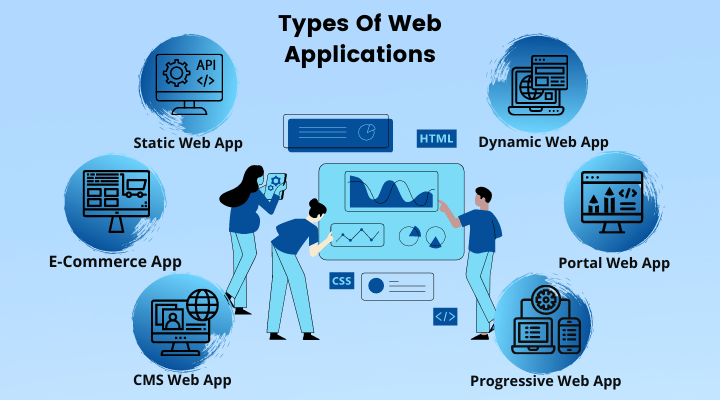
Websites with functionality and interactive elements are called web apps. Facebook, YouTube, Twitter, etc. are all web apps that are dynamic and designed to engage users.
The fact that web apps are highly customizable and can perform a variety of different functions makes them more complex and require an experienced team of software developers.
Web apps are applications accessed through a web browser through a database, often allowing the user to customize an interactive experience based on personal information. A Web App can reference, store, and access data through a customized interface to simplify the delivery of information to your customers.
To know more about web apps visit our blog.
What is WebView?
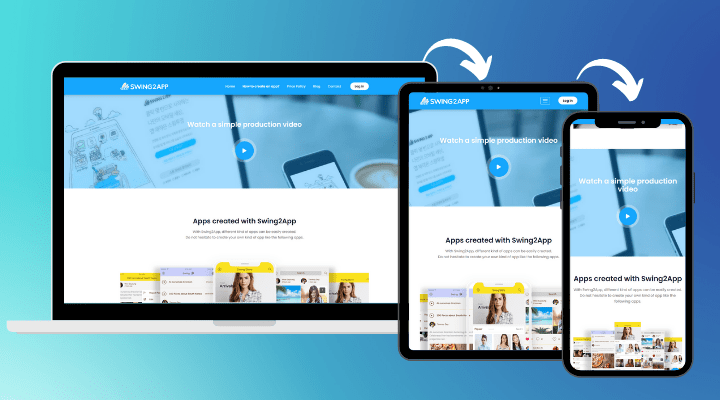
A WebView is a component of an app that is used by app developers. It works like a browser; it simply displays a website. This is used for every website to app converter out there. App developers find it useful since it already takes care of most of the website to app converter.
However, there is one big problem: if your web app does nothing more than display your website in a WebView, it won’t be accepted by the Apple App Store and only rarely by the Google Play Store. App Store guidelines make this clear:
“Your app should include features, content, and UI that elevate it beyond a repackaged website. If your app is not particularly useful, unique, or “app-like,” it doesn’t belong on the App Store. If your app doesn’t provide some sort of lasting entertainment value, it may not be accepted. “
It’s not the fault of Apple or Google either, because an app that displays only a website doesn’t provide any additional value, since you can simply visit the website in a web browser. Therefore, in order to be accepted into the App Stores, the app must include components in addition to the WebView. This means using native or hybrid components in your app.
Swing2App ensures that your webview app is perfectly created and uploaded to the store without fail.
Native Design
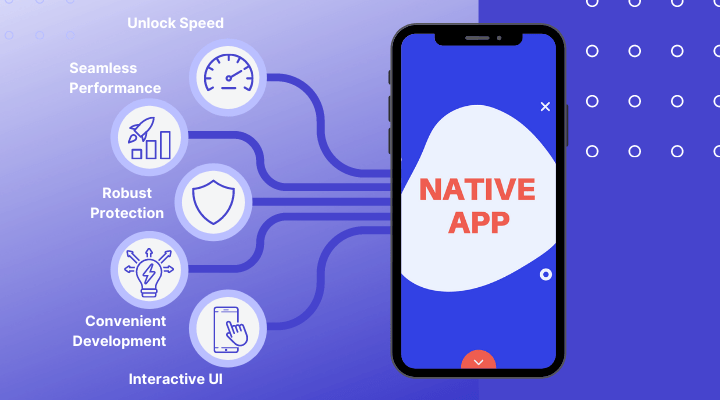
Basically, if an iOS app (or a part of it) uses native design, it follows Apple’s guidelines for app design. The same holds true for Android and Google Design guidelines. In order to get into these App Stores, this is a requirement.
The idea is to create a custom app for specific app store. This is due to the fact that uniformity in app design makes them more visually appealing and easier to use.
Hybrid Design
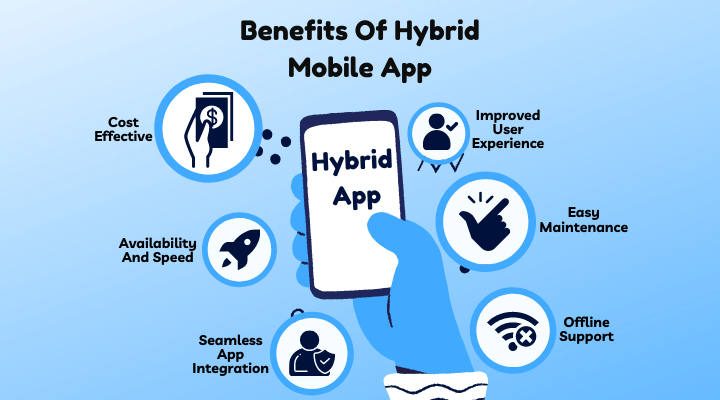
A hybrid app is designed to work across multiple platforms. Generally, hybrid apps are written in web-based languages like HTML5, which are then compiled into a mobile-friendly language.
Hybrid apps have the biggest advantage of supporting multiple operating systems at a much lower cost than separate native apps. In most cases, users cannot tell whether an app is native or hybrid if it is well developed. The users don’t care how an app is developed – they only care if it works on their device and does what they expect.
With Swing2App you can create a hybrid web app, by using our website to app converter for free!
Without further ado, let’s jump right into the Swing2App website to app conversion process.
How Swing2App works
For converting your website into an application, Swing2App provides 2 types of prototypes. You have to choose either of them depending upon your target and needs.
1. Push only: this is a web app that is created by linking a website as it is with an app.
Push-only prototype converts your mobile website to your app in a special way. The push-only prototype design gives you the access to send push notifications, and the bottom of the screen category menu makes it easy to navigate within the app.
2. WebView: The web view is also a prototype in our website to app converter in the same way as Push. The app does not create a separate menu or icon and does not send push.
If you have a mobile-only site and want to create a mobile-optimized app, this option is for you.
Let’s take a look at how you can do all this in 3 simple steps!
1. App basics: Fill out your basic web app details like name, icon, idle screen
2. Design Theme: Select the prototype (either WebView or Push only)
3. Page Menu: enter your website URL and click on app creation request.
Image showing the 3 steps:
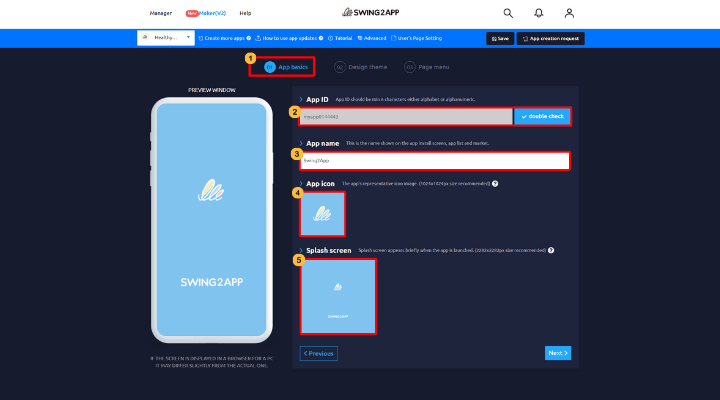
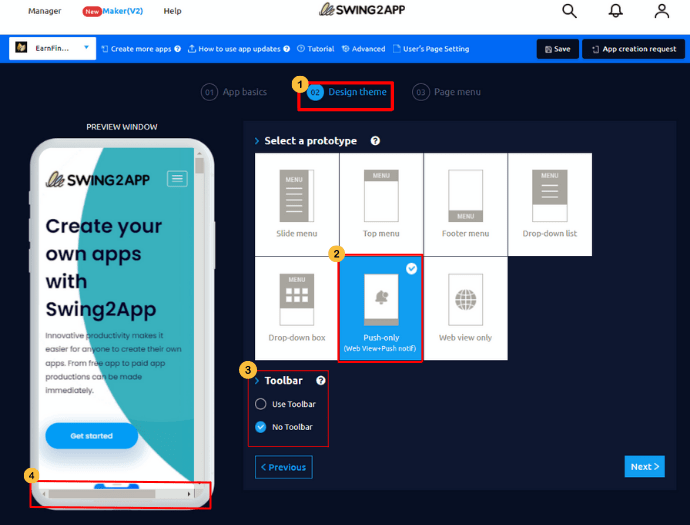
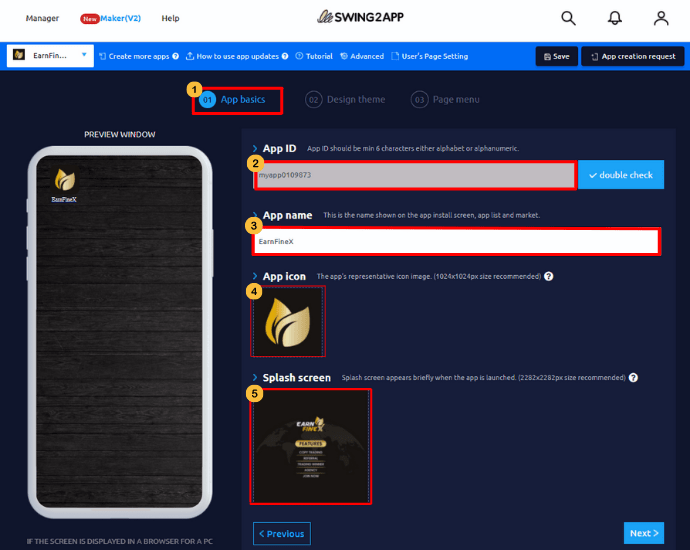
Your app is ready, you can download the apk file and view it on your android device.
Check out our YouTube video for further explanation on the website to app converter:
Why Swing2App is best?

Web apps have many advantages, the main benefits of which are:
1. Cost-efficient
With Swing2App website to app converter, you can create a web app for both android and iOS devices at the same time!
Confused about whether to make an Android or iOS app. Check out our blog
2. Easy to maintain
Web apps are comparatively easier to maintain than a website since they use the same code across the multi-platform application. There are no compatibility problems.
3. Multi-platform
Web apps may run on any platform, including Windows, Linux, and Mac, as long as recent browsers are installed. They provide mobile-like features on websites as well as mobiles, thus creating brand recognition. For example, Amazon.
4. App store and updates
In online apps, permission from the app store is not necessary.
Another advantage of adopting web apps is that updates are automatic, and because they’re deployed centrally, everyone should be using the same version.
6. Enhanced user experience
You may improve your entire mobile UX by using website to app converter.
Web Apps provide a direct action from a single touch, which may start at home screen icon or a push notification.
However, Swing2App is not special just because of all the benefits of web apps mentioned above, but the ad-on benefits that help you in every step of app development. And this makes Swing2App Truly a One-point solution to create and manage your app.
Inexpensive store upload: It is a daunting task to upload an app to the App Store due to its strict rules and regulations, even a minor mistake can cause your app to be rejected.
To prevent this, you can purchase Swing2App store upload ticket and we will handle everything on your behalf. If the app is rejected, we will make ensure necessary changes are made so that you can continue to publish your web app without any fuss.
Update your app easily: The web app is simply a replica of your website in the form of an app. As everyone accesses the same version of the web app via through URL, they will always be obtaining the most up-to-date version of the app.
24*7 swing2app support: Most app development companies and platforms are only involved in the creation process; they don’t provide any future app help promise. And during the process even a slight change in the app may cost you several dollars, the costs just keep rising!
What about the uploading issue after the app has been created? What if you need an update or technical assistance?
Do not panic!
With Swing2App, you get lifetime app support for your published web app. If you have any questions or concerns, we are always happy to assist you.
Customization also available: We can also help you if you want to customize specific pages of your app, and the cost for that is quite reasonable. It totally depends upon the complexity of app customization.
There are enough reasons that we have provided for you to choose Swing2App as your free app development platform.
Still doubtful?
See for yourself!
App creation is completely free. You only need to pay when you want to publish your app on the app store.
]]>There’s an app for everything these days. Websites are embracing apps at an increasing rate. The reason you’re reading this is that you’re thinking to convert your website into a mobile app.
Consumers today expect fast loading and browsing experiences. Users will lose interest if the loading process takes too long. As you can see from the Progressive Web Apps (PWA) statistics:
The Starbucks PWA resulted in 2x daily active users.
AliExpress sales conversions increased by 84% on iOS.
Telegram, an instant messaging app, was launched in 2013. With the company’s PWA, the number of users’ sessions has increased by 50%, as well as the retention rates.

What are the benefits if you convert your website into a mobile app? What are the main challenges? Are there any easy, affordable website to app maker?
Let’s explore these and other questions. You’ll learn about all the options for completing this task – and why Swing2App website to app maker might be right for you.
Why your business might need a mobile app
Businesses and customers alike benefit from converting website mobile apps – that’s why nearly a third of small businesses already have one. Below are a few reasons why you might want to convert your website into a mobile app.
Ease of Access
Once an app has been installed, it’s much easier to engage with that application than it is to open a separate browser application to view a website.
According to research, mobile users spend 83% of their time in apps while only 17% in web browsers — this is due to the convenience of having a mobile app right on the home screen
Search Engine Optimization
Google will display your app as an “app pack” when someone searches for your brand on a mobile device. Google will analyse that the user is browsing on mobile and will want to show results that are best suited for that interface.
A mobile app, your website will rank higher as more people are using mobile devices to browse the internet.
Integrations
Another advantage of turning your website into a mobile app is that mobile applications have more access to your phone’s functionalities than a web browser.
To make your user experience even more engaging and immersive, you may combine your app with phone contacts, browser data, camera functionalities, and other smartphone capabilities like GPS.
Converting website to app gives you added advantage of all these functions which boosts customer retention.
Enhance your Mobile UX
It’s upsetting to find that your favourite brand or product has a fantastic website on the desktop, but when you load it on your phone or tablet, it’s nothing like the desktop version.
Your responsibility as a marketer, website owner, and/or web developer is to produce a positive user experience, but what if your site isn’t mobile-friendly? Should you shut it down and start from scratch, start taking on a website redesign, or try to fix the flaws possibly leading to more issues in the future?
Instead, you may convert your website to app. This manner, you can maintain your desktop version the same while providing a more user-friendly mobile version.
More Loyalty and Engagement
Going to Google Play or the App Store is an act of loyalty in and of itself. Users who do so are demonstrating that they are, or are on their way to being, your most ardent supporters. The 20% of users who are responsible for 80% of your company’s engagement and income.
By converting website to app, you can provide these core consumers a “home” — an icon on their home screen, a more personal contained experience, and a one-tap direct route to your information. You’ll have more chances to develop your relationship by keeping top of mind and interacting easily via push notifications.
Revenue Potential
When you turn a website into a mobile app, you’re laying the foundations for a lucrative income stream for your company.
The main ways to monetize your mobile app are: In-app advertising, eCommerce sales, subscriptions, and in-app.
Furthermore, we’ve seen that income from eCommerce applications has increased at an incredible rate in recent years, to the point where 78 percent of consumers would prefer to visit a eCommerce store via a mobile app over a mobile site. In comparison to eCommerce stores on the mobile web, eCommerce apps have 3x greater conversion rates. Creating website to app is very easy with Swing2App no code app builder.
Other potential monetization strategies are also accessible. You could, for example, develop a subscriber-only app and bundle it with a membership plan, or you could create an ad-free version that users may pay a monthly price to use.
Push Notifications
One of the most significant advantages of converting a website into an app is the ability to provide push alerts.
While push notifications may be sent from a website, they are quite restricted. On iOS, you can’t email them at all and must go through far more permissions hoops. You may send notifications to everyone who has the app installed, regardless of their operating system. This is one of the greatest advantages when you convert website to app.
Push notifications are enabled on 33 percent of persons under the age of 34’s phones for various companies and applications. That’s a significant number of prospective users with whom you can communicate directly via the highly visible lock screen. When compared to email, push notifications offer a considerably greater engagement rate, and you’re not limited in your reach like you are on social media.
Whether your mobile app should be iOS or Android (or both)
As Android and iOS applications have various code versions, you’ll need to pick if your programme is for Android or iOS consumers. In an ideal world, you’d like to cater your app to both sorts of customers; but, if you don’t have the time or money to construct two separate applications, you may have to make a tough choice.
However, with Swing2App you can covert website to app for both iOS and android at the same time. Isn’t it great!
Android has a far greater user base than iOS. The Android OS had an 84 percent market dominance in 2021, while the iOS OS had just around 16 percent. Android smartphones are used by many more people throughout the world than iOS devices.
While Android is the most common operating system worldwide, iOS is the most popular in the United States and Japan, as shown in the graph below.
Both operating systems are functionally similar, and you may host your software on any platform if you like. The biggest difference between the two systems, aside from the quantity of users, is the coding format. APK files are used by Android, while .ipa files are used by iOS.
You may make your app available on both Android and iOS, but you’ll have to develop two unique applications – even if they have the same functionality.
The guidelines for app rejection are another variation between Android and iOS. Apple guidelines have very rigorous criteria, and it prefers to only publish entertaining and useful apps that make use of iOS-exclusive capabilities. As a result, webpages that are transformed into iOS applications are more likely to be rejected by Apple’s App Store.
Apple is equally concerned with the user interface (inappropriate UI is the most frequent rejection reason). It provides designers and developers with “Human Interface Guidelines” and “UI Design Dos and Don’ts.” If Apple thinks your app’s UI isn’t up to par, it will remove it from the App Store.
What to consider when creating a mobile app
There are a number of tools available to assist with the conversion of website into mobile app (iOS or Android). Such services, however, cannot provide much customization. That’s why it’s preferable to build a native app from the ground up rather than use a third-party solution to convert your website.
Keeping that in mind, it’s important to remember that app development necessitates planning and time. You might not know what it takes to construct an app from the ground up if you haven’t built one before. Before you start designing your app, think about the following factors:
Development costs
App development costs are distinct from website development costs in that they cannot be created with a low-cost building tool such as a content management system. In your team, you’ll almost certainly need a developer or a development team.
The cost of developing a native app might be perhaps high. However, investing some money at the outset of the process and getting a decent result right away is preferable to paying a service to design the interface you want over and over again.
We’ll go through price in more detail in the following section, but if you’re spending thousands of dollars on an app, you’ll want to know what the entire cost will be before you commit to app development.
Screen Size
The mobile market is brimming with one-of-a-kind products, including a variety of smartphones and tablets. As a result, while designing a UI/UX, you should take into account different screen sizes and make sure that all pictures, charts, and buttons appear fantastic on different devices.
Pro Tip: To avoid issues, work with a knowledgeable and professional UI/UX designer.
Search Presence
People will often look for your website before downloading your mobile app. While Google will assist you by including “app packs” in search results, you can also inform consumers about your mobile app via a popup on your website. This will entice users to download your app, especially if your website isn’t mobile-friendly.
Now that we’ve covered all of our areas, let’s put our strategy into action and talk about how to turn your website into a mobile app.
Examples of websites converted to an app
1.H&M
2. Canva
How to convert a website into a mobile app
There are several ways by which you can convert your website into a mobile app. Basically there are 5 broad options for you to convert website into a mobile app:
1.Code the mobile app by yourself
2. Hire a freelancer to create the mobile app
3. Hire an app development agency to build the mobile app
4. Use a DIY app creators
5. Convert a website to app with Swing2App
We will discuss the last one that is to convert your website into a mobile app with Swing2App. To know about other options please read our blog:
In Swing2App, we designed it so that anyone (especially non-techies who don’t know coding) can easily convert any website into apps while keeping all the great features of the web. As part of our service, we handle all of the tricky parts like customization, submission and publishing on the App Stores, and ongoing updates.
In addition to providing you with the kind of result you’d expect from custom development, Swing2App also handles all the tricky bits, so you don’t have to. It’s all available at an affordable price.
How to convert website into a mobile app in 3 simple steps?
Converting your website into an app with Swing2App is no rocket science!
It is an application development platform by which anyone can develop their own iOS and Android app. The software includes prototypes, templates, and other features by which users can easily customize apps using different colours, themes, user interfaces etc.
The content editing tools in SWING2APP allow developers to add and delete content in real-time as well as you can see the changes on the virtual screen. It offers different features including posts, bulletin boards, multiple chat rooms, submission to official app stores, custom domain, version tracking and more.
With Swing2App converting a website into an app is a simple 3 step no-code process:
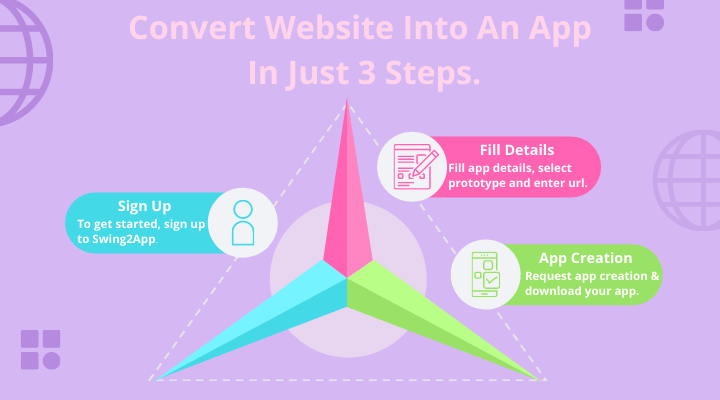
For the detailed process visit our blog on: How To Convert Your Website Into An IOS Or Android App With Swing2App?
Why Swing2App?
Compared to hiring agencies or freelancers, you save tens of thousands of dollars, get better apps, and the apps update automatically with your site so you needn’t add anything new to your work process.
We don’t charge recurring fees; you only pay a one-time fee for converting your website into an app. A single payment allows you to enjoy all the additional benefits such as Swing2App analytics, unlimited push notifications, app maintenance, payment gateways, and much more. This makes Swing2App the best and most cost-effective choice for everyone, especially small businesses.
To know more about the process of converting your website into an app please visit: 3 simple steps to convert a website into an app.
To conclude
You should now be able to answer the question of how to turn a website to app. We discussed the advantages of utilising apps as well as some of the aspects of mobile app creation.
Web-based apps are easier to create, more valuable to your users, to deploy, manage, and protect, and to upgrade as your business grows. The most significant aspect is that the SWING2APP app creator actually offers a code-free experience. Because of the large range of services accessible, it is unquestionably the best free app builder.
]]>Do you want to convert your website to app? You might have come across the idea of creating web apps. However, you are not the first, already, millions of mobile applications are available for download.

Smartphones have changed the world forever, whether for good or for bad. Information is accessed at the touch of a screen, and everything you need to know about a brand is just a few clicks away. As more than half of all visits to websites in 2021 will come from mobile devices, consumers don’t need a desktop computer to explore your website.
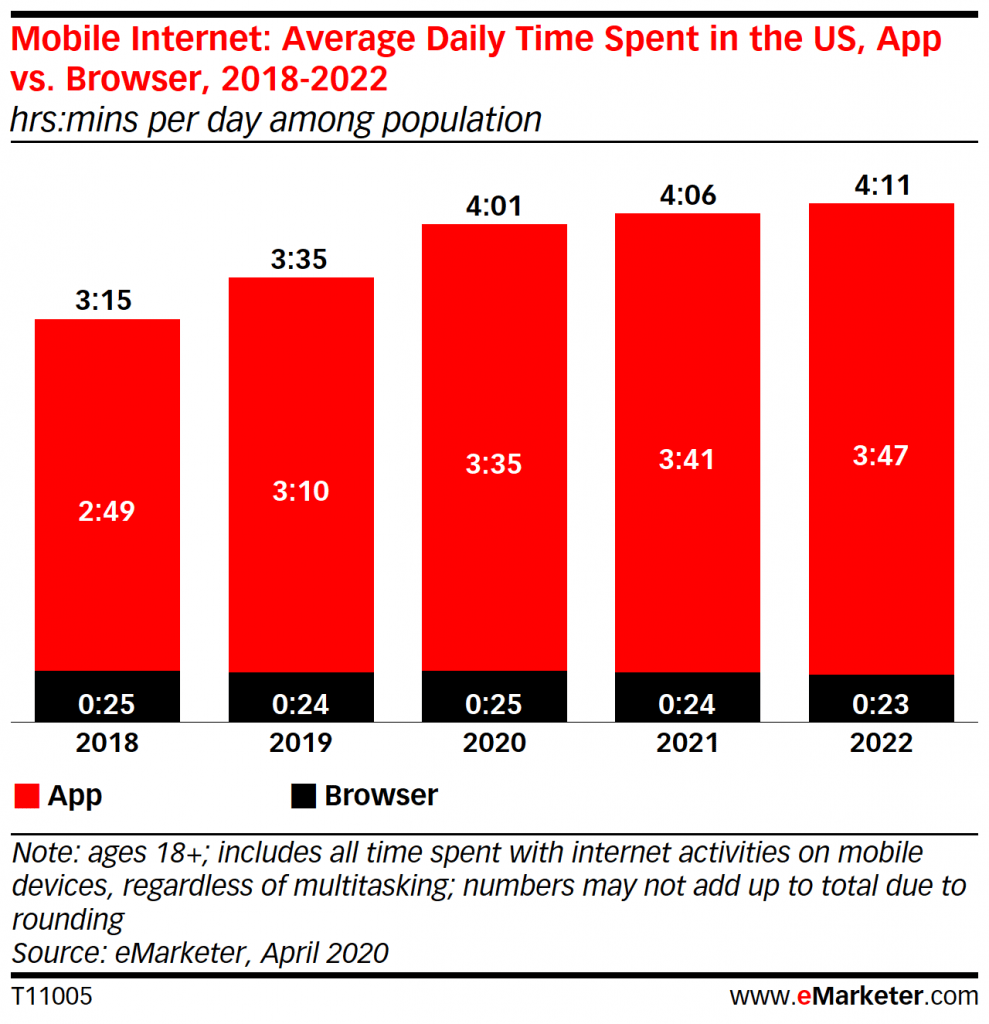
US adults on an average spend at least 4 hours on their mobile devices according to eMarketer.
As per Statista, by 2025 revenue from mobile apps is projected to reach 613 billion U.S. dollars.
Considering the statistics, if you decide to convert a website into an app, you have reached the right place.
To give your customers a mobile-optimized experience, you can convert your website to app (Android or iOS app). The app option is especially useful if your website isn’t the most mobile-friendly on phones or tablets.
In this post, we’ll discuss:
- What is Web application (Web app)
- How Web apps work
- Benefits of Web Apps
- Web Application vs. other application types
Learn More Swing2App Website to app convertor.
What is Web application (Web app)?
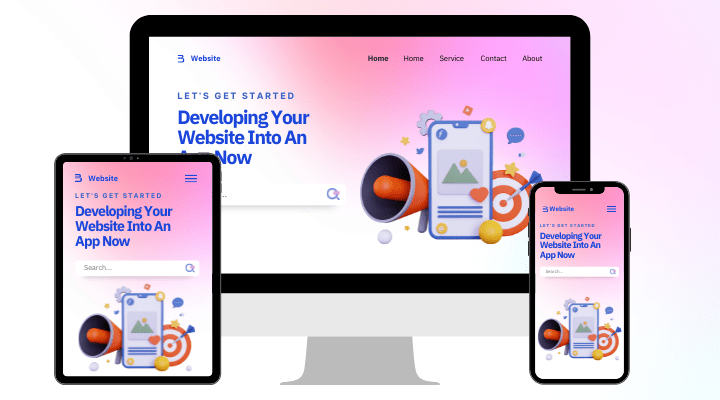
The Web application (Web app) is a program that is stored on a remote server and accessed via the Internet through a browser interface. Any component of a web page that performs some function for the user qualifies as a Web app according to Web.AppStorm editor Jarel Remick.
A web application can be used by organizations as well as individuals for numerous reasons and can be designed for a variety of purposes. Webmail, online calculators, and e-commerce shops are common Web applications. Google Sheets, Quora, and Evernote are some of the most popular web apps.
Checkout our Swing2App free website to app creator:
From ordering takeout to planning vacations, web applications may be used for a variety of tasks. A web app might be anything as basic as a contact survey form on a website or an online calculator. Most Web apps can be accessed with any browser; however, some are only accessible through one specific browser.
Web applications are extremely adaptable, allowing users to execute a wide range of tasks. Consumers can use websites to place orders, create a Wishlist, and inquire about items or services, among other things. Employees may also use apps to exchange papers, interact with one another, modify files, and work on projects together. This is especially significant in the current era of remote working.
How Web apps work
Web applications don’t have to be downloaded because they are accessed through the internet. A web browser such as Chrome, Firefox, or Safari can be used to access a Web application.
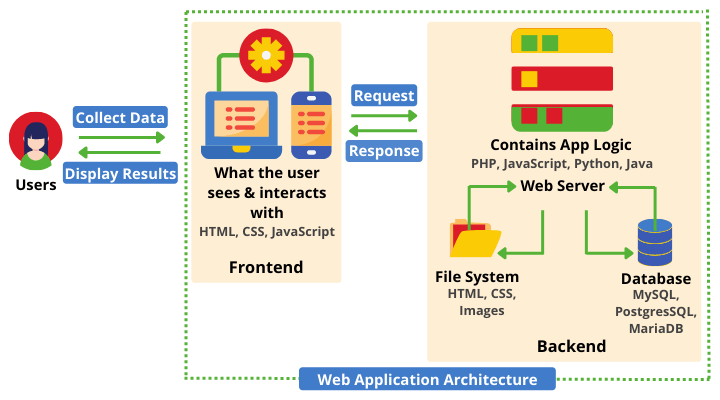
But how web apps work? What are the technical aspects?
The following is a common web application workflow:
- A user sends a request to the server via the internet, either through a web browser or through an app’s user interface.
- The web server sends the request to the appropriate web application server.
- After that, the web application server completes the required job (for example, processing new data) and returns the relevant results.
- The results are then transferred from the web application server to the webserver, along with the required information.
- The web server then replies to the client, displaying the requested information to the user.
Web apps may be created by small teams of developers since they have quick development cycles. JavaScript, HTML5, and Cascading Style Sheets (CSS) are used to create most Web applications. These languages are commonly used in client-side programming to assist develop an application’s front-end. To construct the scripts that a Web app will employ, server-side programming is used. In server-side programming, languages like Python, Java, and Ruby are frequently utilized.
Don’t worry about all this coding, we have a perfect no-code website to app builder solution for you!
Swing2App no code website to app converter you can convert your pre-existing website to app in just 5 minutes!
To know more about top node app builders read our blog: No Code App Builders For 2022: What Is The Best No-Code App Builder?
Benefits of Web Apps
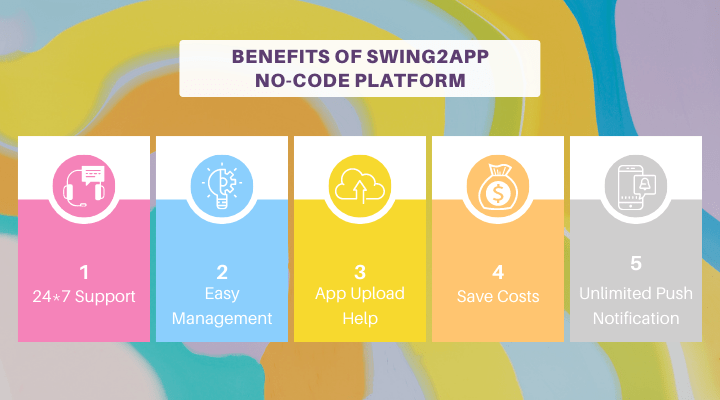
Web apps have many advantages, the main benefits of which are:
1.Cost-efficient
Lowering expenditure is the greatest advantage of web apps, especially small businesses and individuals. This is because they require less maintenance and may have fewer computing requirements (in terms of processing power and so on)
With Swing2App you can convert your website to app for both android and iOS devices at the same time! Confused about whether to make an Android or iOS app. Check out our blog: IOS Vs Android: Which Is Suitable For Your First App?
2. Easy to maintain
Web apps are easier to maintain than a desktop website since they use the same code across the application. There are no compatibility problems.
3. Multi-platform
Web applications may run on any platform, including Windows, Linux, and Mac, as long as recent browsers are installed. They provide mobile like features on website as well as mobiles, thus creating brand recognition. For example, Amazon.
4. App store and updates
In online apps, permission from the app store is not necessary.
Another advantage of adopting web apps is that updates are automatic, and because they’re deployed centrally, everyone should be using the same version.
5. Save space (storage efficiency)
Web applications are Internet-enabled apps that may be accessed using the web browser on a mobile device. As a result, there is no need to download or install them.
Subscription-based web apps, such as software as a service (SaaS), also aid in the reduction of online software piracy, which can cause significant issues. Because SaaS is only accessible via the cloud, consumers can only utilize it after paying for it. Because such programs may be accessed totally online, they do not require installation.
6. Enhanced user experience
You may improve your entire mobile UX by converting a website into an app.
Web Apps provide a direct path from a single touch, which may be initiated by a home screen icon or a push notification. The native navigation and functionality inside the app provide for a significantly smoother, slicker experience.
They have easier access to common device controls like swiping and pinching, which improves the user’s experience. Web Apps are just better designed for mobile devices and hence enhance user experience.
Web Application vs. other application types
We’ve previously mentioned that there are several sorts of applications. Although we’re primarily concerned with web apps, it’s worth pausing to consider other types, such as mobile and hybrid apps. We’ll give you a fast rundown of what they are, what functions they have, and a quick summary of their many benefits and drawbacks.
Web apps, mobile apps, and hybrid apps each offer their own set of benefits. As a result, it’s critical to examine the benefits and drawbacks of each before determining which is ideal for you. Each application has a distinct function.
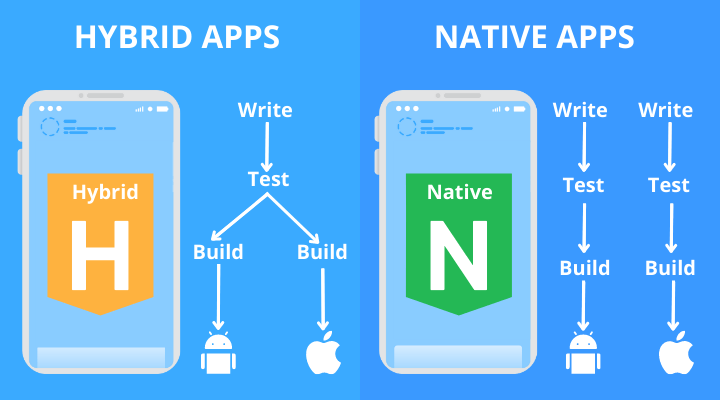
Mobile apps
Mobile applications (also known as native apps) are particularly popular. Native apps are software programmes created specifically for a platform or device, such as Android or iOS. For that reason, they’re written in a specific programming language. Users often obtain them via app stores and install them directly on the devices in question.
Web apps are occasionally contrasted with native apps in the mobile computing industry, which are programs that are designed expressly for a platform or device and deployed on that platform or device. The two, however, are not mutually exclusive.
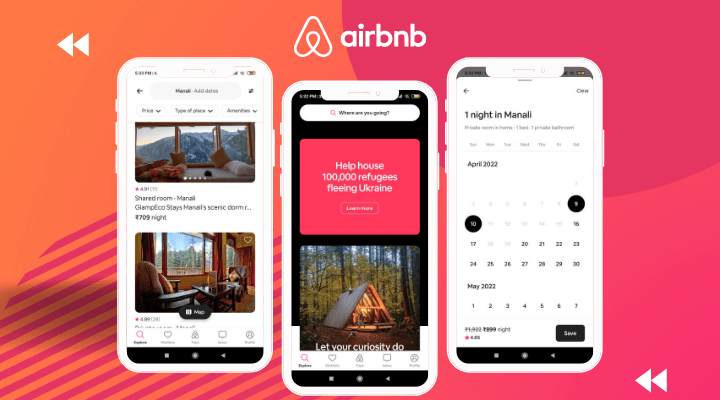
Native programs are those that are downloaded and built expressly for the device on which they are installed. On a mobile device, native apps may frequently take advantage of device-specific hardware, such as a GPS or camera.
Mobile applications may serve a wide range of purposes, from assisting us in finding routes to our desired locations to delivering multimedia material to our mobile devices.
Hybrid apps
The Hybrid applications are programs that mix the two methodologies. These applications function similarly to Web apps, but they are installed on the device in the same way that native apps are. Internal APIs allow hybrid apps to take use of device-specific resources.
Hybrid apps do not have this capability; nonetheless, downloaded native programs can occasionally work offline. Because hybrid applications are built on Web apps, they will usually include comparable navigation components.
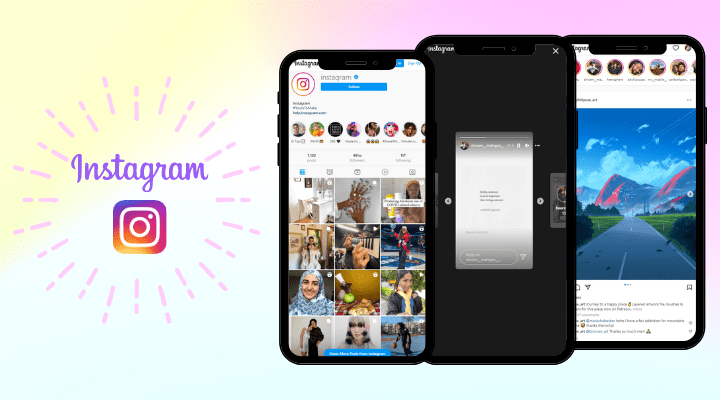
There are also hybrid applications, which include characteristics of both mobile and online apps, as the name implies. On the surface, hybrid apps appear to be identical to native apps. They’re made with Ruby, JavaScript, HTML5, and Cascading Style Sheets, among other computer languages (CSS).
Hybrid applications are installed on a mobile device in the same way that native apps are, and they appear to the end-user to be the same. Internally, though, they are just web applications with a frontend dashboard.
Advantages and drawbacks
Both native and hybrid apps offer advantages. Offline functionality is available in both mobile and hybrid applications (despite the latter’s underlying resemblance to web apps). They can also use the resources of the device on which they’re installed.
This implies they’ll be able to employ features like cameras and GPS. Web applications, on the other hand, must be accessible through a web browser; as a result, web apps cannot be used when users are offline.
When compared to online applications, however, there are several drawbacks. To begin, mobile and native applications must be obtained from an app store and installed. They must be installed on the smartphone, which means they consume storage space, which can quickly run out, causing users to shuffle their current programs to find places for new ones. Web browser plugins may be available for mobile apps.
There’s also the problem of upgrades to consider. Users of mobile and hybrid applications may be required to download updates manually, which implies that various versions of the same software may be used by different people, making team cooperation more difficult.
Web applications, on the other hand, are automatically updated from a central location. Users are not forced to perform any tasks, which saves them time and allows for more effective communication.
Conclusion
A hybrid app is a good choice if you’re searching for a low-cost bespoke app development alternative. Swing2App, a website to app converter and no-code app developer, offers a variety of mobile app services to assist your company in growing.
We’ve also turned several websites into mobile applications for clients all around the world. As a result, we can better understand your business and design the finest app possible while keeping your budget and deadline in mind.
]]>If you want to generate money online, opening an e-commerce business might be a good place to start.
Setting up a store, on the other hand, is insufficient to produce sales.
You must understand how to effectively promote your shop to generate sales.
The end of the year is here! An opportunity for online retailers to generate a sizeable portion of their business revenue. Holidays and events such as Black Friday, Cyber Monday, and Christmas, which fall in the fourth quarter, provide opportunities for e-commerce businesses of all sizes to increase their online sales.
Many online sellers, particularly those without a solid action plan, are struggling to keep up with the holiday season.
Year-on-year growth of e-commerce holiday season sales in the United States from 2019 to 2021, by online shopping day-Statista
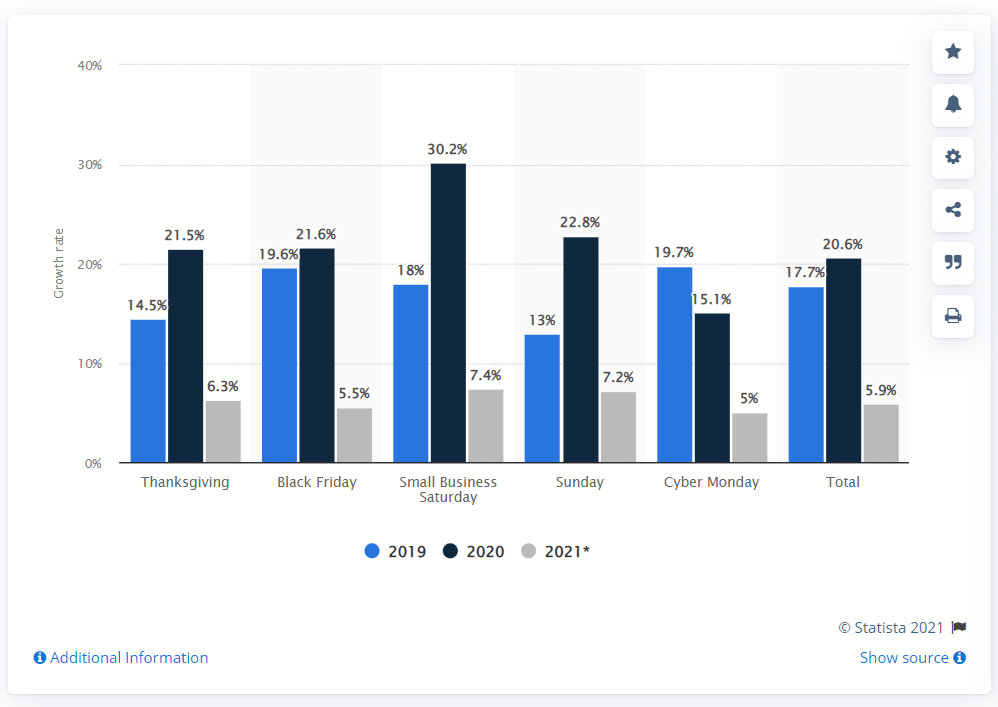
According to Statista in 2020, total e-commerce sales during the U.S (United States). The holiday season grew 20.6 percent. Small Business Saturday saw the highest increase in online sales of all shopping days during this period, up more than 30 percent compared to the previous year. Meanwhile, in its 2020 edition, Thanksgiving and Black Friday each witnessed a 22 percent jump in web sales.
This makes it quite clear that the year-end is a blessing for e-sellers.
Now, we will look at six tips you can use to boost sales at your e-commerce shop.
You will be able to take your fledgling business and transform it into a powerhouse that produces sales 24 hours a day, seven days a week by the conclusion of this article.
Let’s get started!
Here are the strategies to get the best out of the going year
1. Clear Budget for marketing
One of your most significant expenses is your marketing budget. A well-thought-out budget guarantees that your marketing efforts are maximized. As a result, it’s critical to be cautious about how you spend your marketing budget. You should look at the best social, search, and display platforms to acquire media for your brand when allocating your marketing money intelligently.
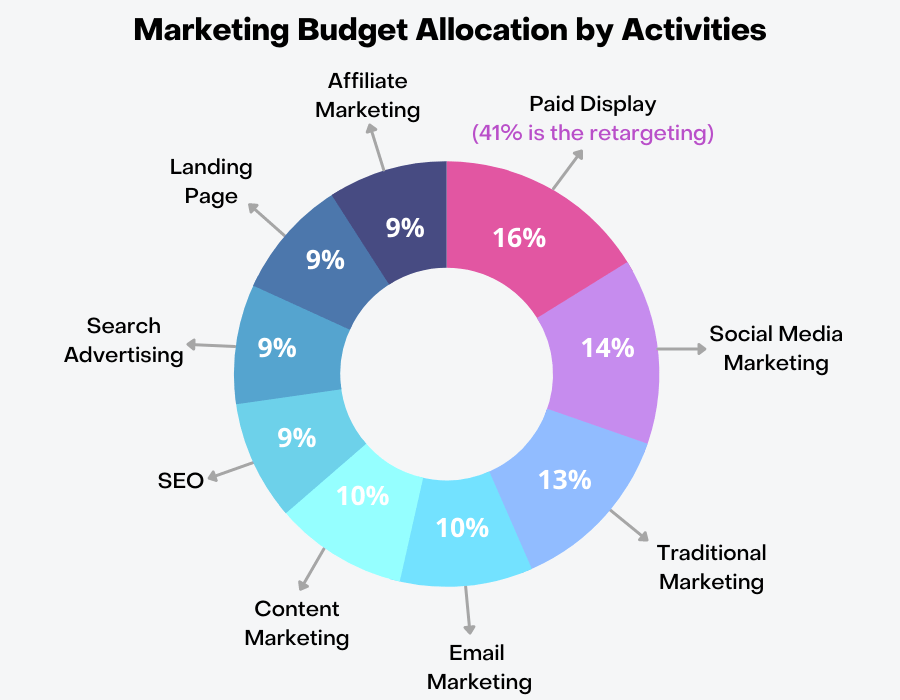
In certain circumstances, retargeting is more effective than reaching out to a new audience. Furthermore, when compared to other marketing strategies, retargeting is a low-cost option.
You should re-target those who have done the following:
- Browsed your website in the year
- went to your specific product category.
- brought within the last six months
- Clicked on your social media ads.
- Followed you on every social media platform.
- Abandoned their cart.
Spending a little money to re-capture these clients may result in more sales than you anticipated. However, before allocating any marketing costs, you should take a step back and evaluate your business and goals.
2. Eye-catching product video ads
Represent your business what your product is all about. Create content that showcases your product. If you have a high-quality product with features that set it apart from the competition, you will also have a video to highlight it. They highlight the best features of a product in an entertaining way that appeals to people.
If you are not sure how to make a compelling product video, consider the following suggestions:
- Set clear objectives of video
- Determine your target audience
- Let your customers tell your story
- Take inspiration from your competitors.
- Discuss advantages rather than features.
- Choose words that will help to reinforce your main point.
- Obtain the viewpoint of a consumer
- Have a strong call to action (CTA)
Keep in mind that the average length of time for a video ad to grab an audience’s eye is between 30 and 45 seconds. So, try to create concise yet effective videos s or risk losing viewers.
3. Promote your top sellers
The rule of thumb is to sell what is selling and then sell even more. Your eCommerce store may contain hundreds of product categories, but each category does not generate equal numbers of sales. That is why you must determine which category is performing better than the others.

It’s important to consider historical data and future potential success when determining the top-selling categories. Obviously, there are many more factors to consider when determining the best-selling categories, but these are some of the most important.
4. Smooth checkout and payment experience
eCommerce checkout processes that are well-designed boost conversions. You’ve worked hard to gain people’s attention. Having carefully chosen and developed your products, written marketing copy that is tailored to your ideal customers, and creating a clear and simple purchasing path are just some of the things you have invested time and money in. A poorly designed checkout page may waste all your effort and money.
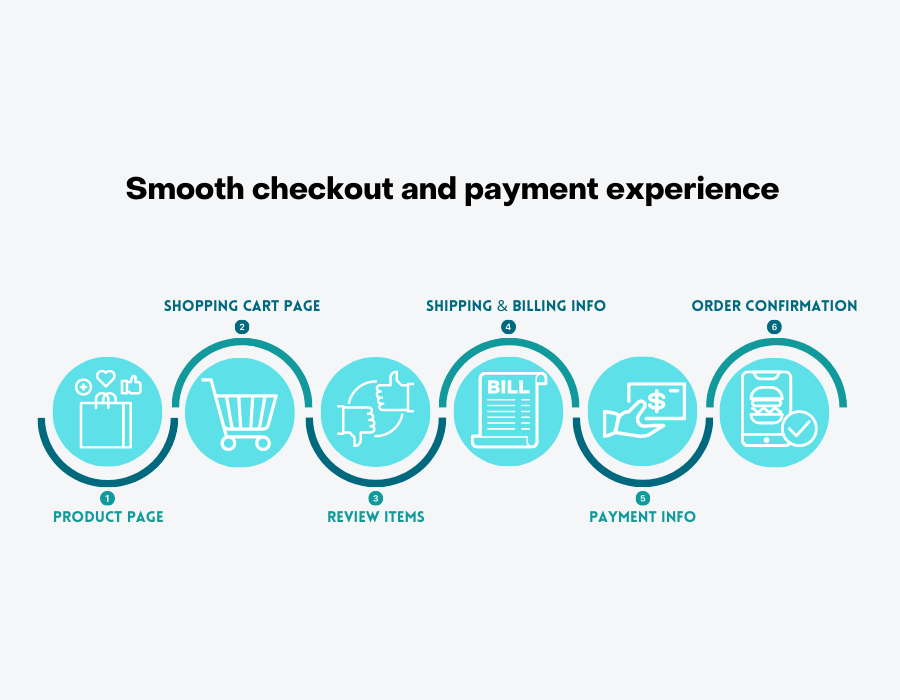
Statista reports that 88.05 percent of online shopping orders were abandoned in March 2020, i.e., not converted into purchases. An estimated one in five customers will abandon their shopping basket due to a “long/difficult checkout process” in the coming years.
Your checkout process must be straightforward and easy to follow. If your checkout process is easy and straightforward, you can convert those would-be abandonments into valuable sales.
These tips will help you improve your eCommerce checkout process and provide your customers with a pleasant shopping experience:
- Be transparent about all the costs
- Include thumbnail images of products
- Quick navigation
- Highlight ongoing Offers or Coupon Codes
- Multiple payment methods
- Guest checkout option
- Provide Live chat support
- Proper Refund and Return policy
5. Optimize your website
Optimizing and testing your website is another important strategy to consider when developing an eCommerce strategy. Make sure that your website is accessible on smartphones and tablets. Make sure that the website looks good on different devices. In addition to your website, you should also have a mobile app. With Swing2App no-code mobile app builder, anyone can create a mobile app for an eCommerce store either from scratch or convert your website to an app in just minutes.
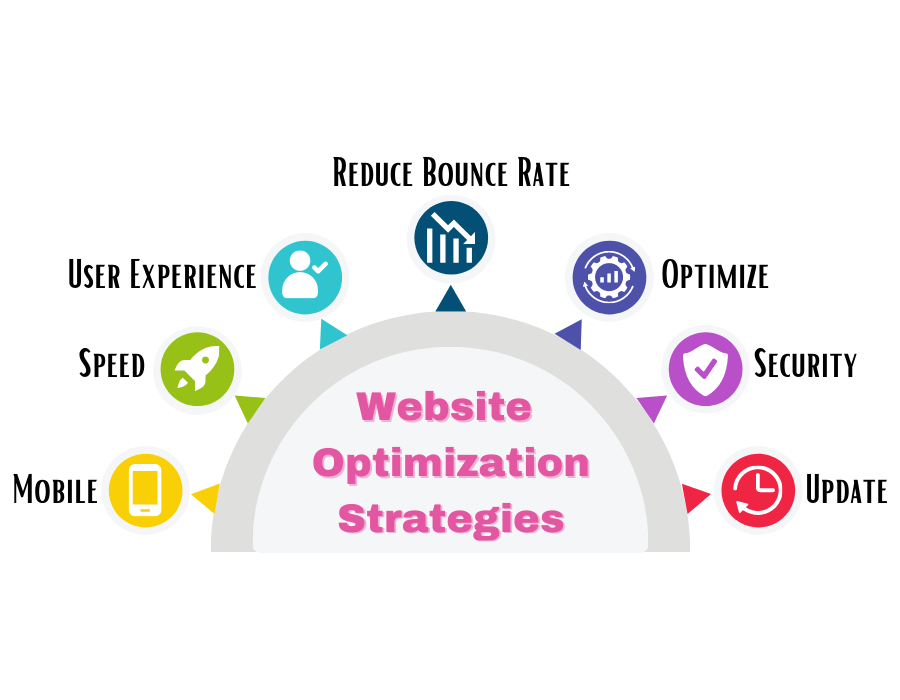
Your website may see a significant increase in traffic during the holiday shopping season. In a brief period, how well are you prepared to handle a sudden surge in the number of visitors to your website? Consequently, it’s useful to conduct tests in advance to make sure your website can handle a surge in traffic without crashing.
6. Customized Loyalty rewards
Customizing loyalty programs is the key to success.
The building blocks of every program are the same, but the success is finding a way to tailor it to meet the needs and desires of specific customers.
Although no two retailers have the same demographics, all customers want to feel special. Creating differentiation and brand loyalty is all about customizing the loyalty rewards for your customers.
The best example of this can be Starbucks ‘ loyalty program.
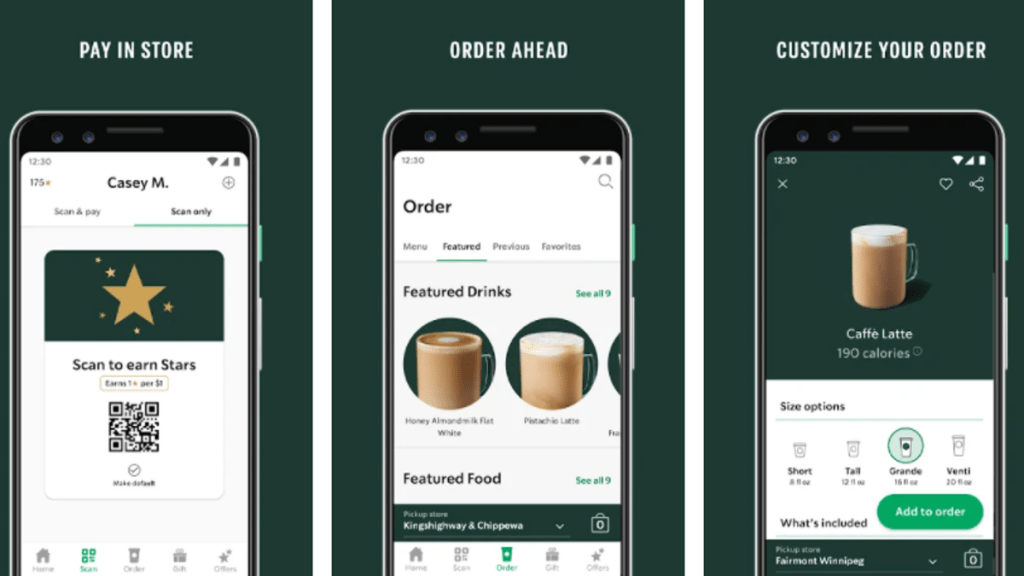
Customer loyalty programs are the most successful because they meet and exceed their members’ expectations.
Wouldn’t it be great to have a loyalty program that attracts and retains members while also meeting these objectives?
In a nutshell
Prepare for the final quarter early to have a more successful and stress-free period. Planning for the final minute can help you avoid costly mistakes that will harm both the company and you personally. Early planning puts your company in a much better position.
If you want to increase your e-commerce sales, you need to use Swing2app and gain an edge over others. With Swing2App, you can build a fully functional eCommerce app with all the essential features like shopping cart, product gallery, and more without even a single line of code. One of the great advantages of Swing2App is that you can purchase a plug-in product with Ad Mob integration.
If you have an Ad Mob account, all you need to do is include the necessary Swing2App information, and the Ad Mob ads are automatically added to your app.
Moreover, all advertising money is shared with consumers. To integrate Ad Mob into the application, Swing2App only charges the installation costs.
Do you own a website or want to know how to create an app, that too using a free app maker which is truly a no-code platform?
Swing2App is the solution!
Get in touch with us if you are looking for help to you build an e-Commerce mobile app that increases sales and delivers an excellent shopping experience to your customers without spending fortunes.
]]>Many small-scale businesses have experienced a negative impact, and over 70% believe it will take nearly a year to recover to levels prior to COVID-19.
A recent NBER report that summarises the survey data of over 5 800 small enterprises in the U. S. confirms the scale of SME concerns. And per the study, nearly half of the organizations surveyed have already closed temporarily. Businesses have cut their workforce by nearly 40%. Three-quarters of those surveyed said they have no more than two months’ of cash available.

Further, the topmost challenges that might restrict small businesses are: scaling up their businesses are market access, improving productivity, and getting access to more finance.
Amidst the pandemic, businesses have reaped benefits like cost reduction and increased productivity as digitization has accelerated across sectors. Because of the COVID-19 crisis, the global adoption of digital technology has accelerated.
Across all countries and sectors, small businesses are the hardest hit. Because of the severity and duration of the pandemic’s devastation, these threats are likely to persist for some time to come.
Before the crisis, nearly half of all job opportunities in the private sector came from small businesses. Many businesses exiting leads to longer-term unemployment and economic damage, so understanding which businesses may close permanently is important. Small businesses can benefit from such knowledge in a number of ways, including preventing short-term hardship, enabling them to participate in the recovery process, and better positioning them for long-term survival.
We recognize the gravity of the problem, but what is the best strategy?
Continue reading to learn how to put your small-scale business in the safe zone and be pandemic-proof.
Here’s everything you need if your business has been shut, you’re still in struggle-city, or want to start a pandemic-proof enterprise:
1. Digitalisation, Automation, and Innovation
The virus is obviously pushing everyone into a more digital world. While some B2Bs were already maximizing the digital initiatives, others were caught off guard. Companies who are not accustomed to digital may find it hard to slowly adapt. Business leaders must carefully evaluate the entire system and plan on how the company will be able to adapt to a digital world.
This is also an excellent investment opportunity in technology that will help the firm function more smoothly and efficiently.
If you can automate and build efficiency in your company model to remove human errors or replace humans, your costs will go down. When your production costs for your products or services fall, your margins rise. If your margins grow, you’ll be better protected against downturns that adversely affect your sales.
Being well-established in the market is a dream for almost any entrepreneur, but there is a negative side also, and that is the mindset of too big to fail. However, 52 percent of the Fortune 500 are no longer in business.
As your company grows, it becomes more difficult to innovate, which allows start-ups and smaller businesses to outperform your internal employees. Hence, having a start-up environment is a must for innovation.
2. Multiple Revenue sources
If more than 2/3rd of your revenue is from a single line of products, so the product line is at risk, a key shift in your industry, price wars, etc. may put your business in a financial crunch, it may well be difficult to recover in a short time.
For example, a café selling only coffee and croissants is more prone to a crisis than those that have a slightly larger product category.
Diversity is the key: focus on both b2b and b2c in order to have a larger customer base, so getting online is a must for every small traditional b2b business owner.
You can also incorporate other strategies like:
- Providing affiliate marketing: this will help in getting more sales from wide traffic that you might not be able to reach
- Offering subscription plans: like in gym subscriptions, you can provide subscription plans for dine-in restaurants, you will get paid whether the customer comes or not.
3. Happy Customer is the key
Who pays all your bills in the company? not you, rather your customer. So, to succeed proper attention must be paid to customers.
Wondering how? Following are some ways that you can adopt:
- Take regular customer feedback: ultimately your product or service is for the customer so to stay on the pulse of what they truly want you must get their feedback and improvise.
- Encourage existing customers with loyalty programs: Your loyal clients provide the financial security that your company needs to survive the approaching uncertainties and truly pandemic proof your small-scale business.
- Set up a customer advisory board: having a board that tells you about the problems faced by your consumers will surely be an aid in developing a sustainable business.
4. Strong Social media presence
Physical marketing such as billboards and signs are proving to be invisible to the general public as we drift in and out of periodic lockdowns. The epidemic has digitized marketing, and in 2021, social media will be the most cost-effective approach for your company to compete.
A third of social media users nowadays use their profiles to study products and make purchasing decisions. It’s one thing to put your brand on social media; it’s quite another to stick with it and build a community that will help your business thrive.
So long as you engage with your followers in the appropriate way, your social media presence not only affects brand awareness but also improves client loyalty. Here are some suggestions for enhancing your social media efforts and expanding your business:
- Create a content calendar: If you want to expand your social media presence, you need to be consistent. Use an internet calendar to plan out your postings a month ahead of time. This guarantees that you are uploading to each of your platforms on a regular basis.
- Identify your target audience: Get to know your target demographic to tune yourself in.
- Keep track of how well your postings are performing: Consider what gets the greatest attention on social media. Your social media efforts are a never-ending experiment, so try a bunch of different things and see what gets you the most likes, shares, and comments.
5. Exit/backup plan
This is Plan B your small scale business will implement if any unfortunate contingency arises. You can’t foresee what will happen, and if you plan in advance for various outcomes, you’re essentially assuring that you will have some backup. Even so, having prepared ahead of time to deal with the unexpected while things are going well might help you make better judgments when you are confronted with that unexpected event.
Business planning that allows you to be flexible and prepared for the worst can be quite beneficial. As the “new normal” takes hold, using these techniques to establish a pandemic-proof business strategy for 2021 will help your small firm stay afloat or grow.
How Swing2app can provide an opportunity to revive and boost small-scale businesses?
Swing2App is a no-code app builder where anyone can create an app on their own without any coding knowledge at all. With its Swing Store feature, you can create a top-notch mobile e-commerce app in a few simple steps without much hassle.
All you need to do is register your app by applying for Swing store, where you have to add basic details of your store and you will get all the features that you need for your shopping app.
Swing store enables the following features in addition to the basic Swing2App features:
1. Shopping cart: This is a page where you can check the items you have placed in your shopping cart or before purchasing a product.
2. Category list: When you register a product, you create a category first and then register the product for each category.
Example, In Clothing e-commerce apps:
TOP: T-shirts, blouses, knitwear
DRESS: One Piece
BOTTOM: Pants, skirts, shorts, jeans
After organizing the categories like this, you will register the appropriate products for each category.
Therefore, even the categories that have been created like this can be configured as well.
3. Digital Product purchase completion page: products such as pdf, video, files, coupons, etc.
This page is for checking and viewing the contents you purchased.
4. User profile: “My Page” is a page where users can check all the details of their purchase, payment, and delivery.
It provides functions such as order status, delivery inquiry, delivery completion, purchase completion, and exchange inquiry.
5. Shopping mall main: The shopping mall main page is a main home screen page suitable for applying to the home screen as a shopping mall gateway.
A menu of popular products, categories, and major products is provided which can be edited easily.
6. Shopping mall information: It’s the store information page consisting of basic shopping mall information and provides customer center, operating hours, and other such information.
7. Product search: For easy navigation Swing2App also has a product search page where users can search for registered products in the app.
Users can also apply search filters like- Filter by priority, latest, price, and popularity.
8. In-out time: You can apply it if you have registered a hotel or other accommodations or a product that makes a reservation for the entire day.
Check-in and check-out are displayed in the calendar window, so this feature is best for hotel apps.
When the date reservation is completed by the user, the products available for reservation on that date will be shown.
9. Booking: Users can select a date in the calendar window to view it.
Products available for reservation on that date will be inquired. This is the structure of making a reservation by selecting the time set by the administrator. This type of reservation can be used when your business involves multiple shifts in a day, for example, the salon app.
Conclusion
To summarise, there is no magic potion, formula, or business strategy that is really”everything proof,” but there are actions you can take now to shield your business against black swan events, recessions, and other external forces that may make or break its success.
With Swing2App you can create a fully functioning range from salon, gym,café, restaurants apps, and much more. And that too with all the essential features like shopping cart, product gallery and much more without even a single line of code.
Get in touch with us if you’re looking for help to you build an e-Commerce mobile app that increases sales and delivers an excellent shopping experience to your customers without spending fortunes.
]]>